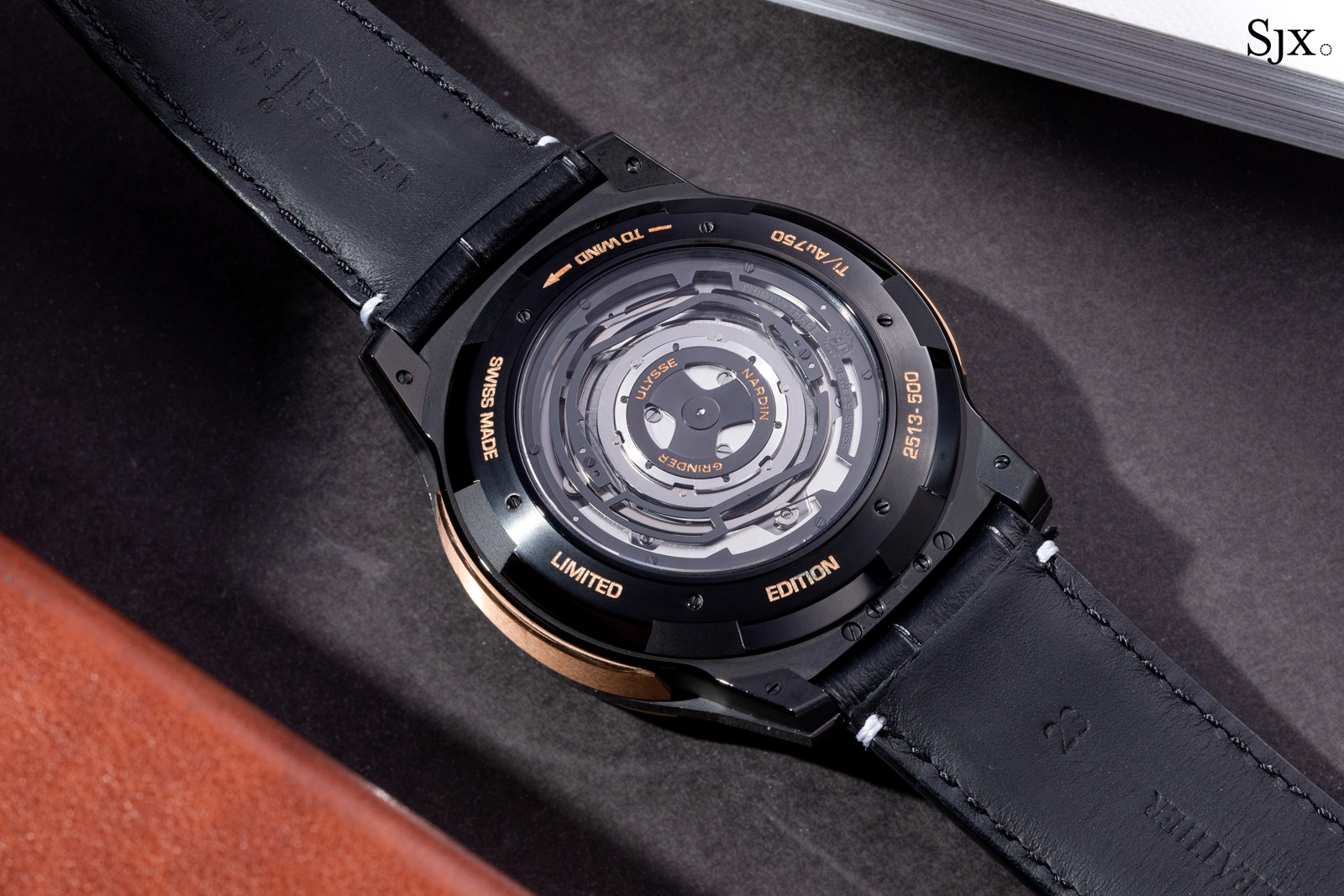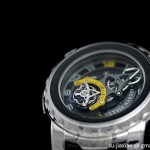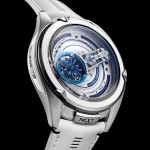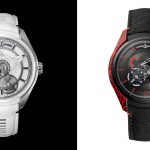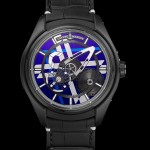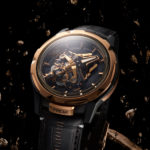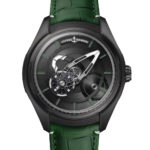In Depth: Ulysse Nardin Freak S
A coherent and compelling evolution of a landmark.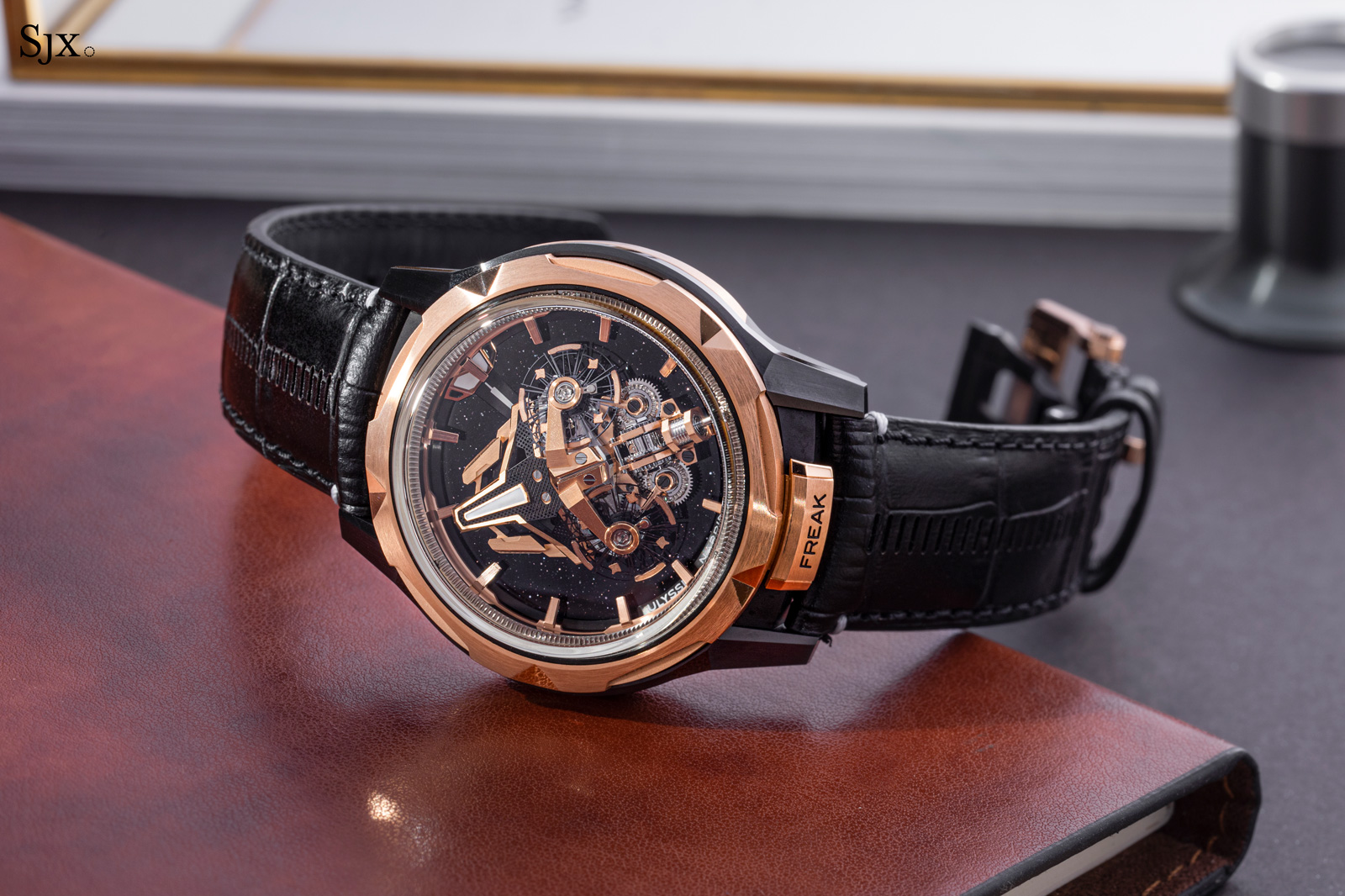
Utterly bizarre and thoroughly ingenious when it debuted in March 2001, the Freak remains avant-garde even two decades later. But unlike the highly modern creations from brands like De Bethune and Urwerk, the Freak arguably gets less credit than it deserves, simply because Ulysse Nardin isn’t a niche, independent watchmaker.
But that takes nothing away from the concept, which has been made more avant-garde than ever. Launched earlier this year, the Freak S is now the flagship model in the Freak line-up. In a first for a Freak, it reimagines the trademark carousel display, which now carries twin inclined balance wheels linked by a differential.
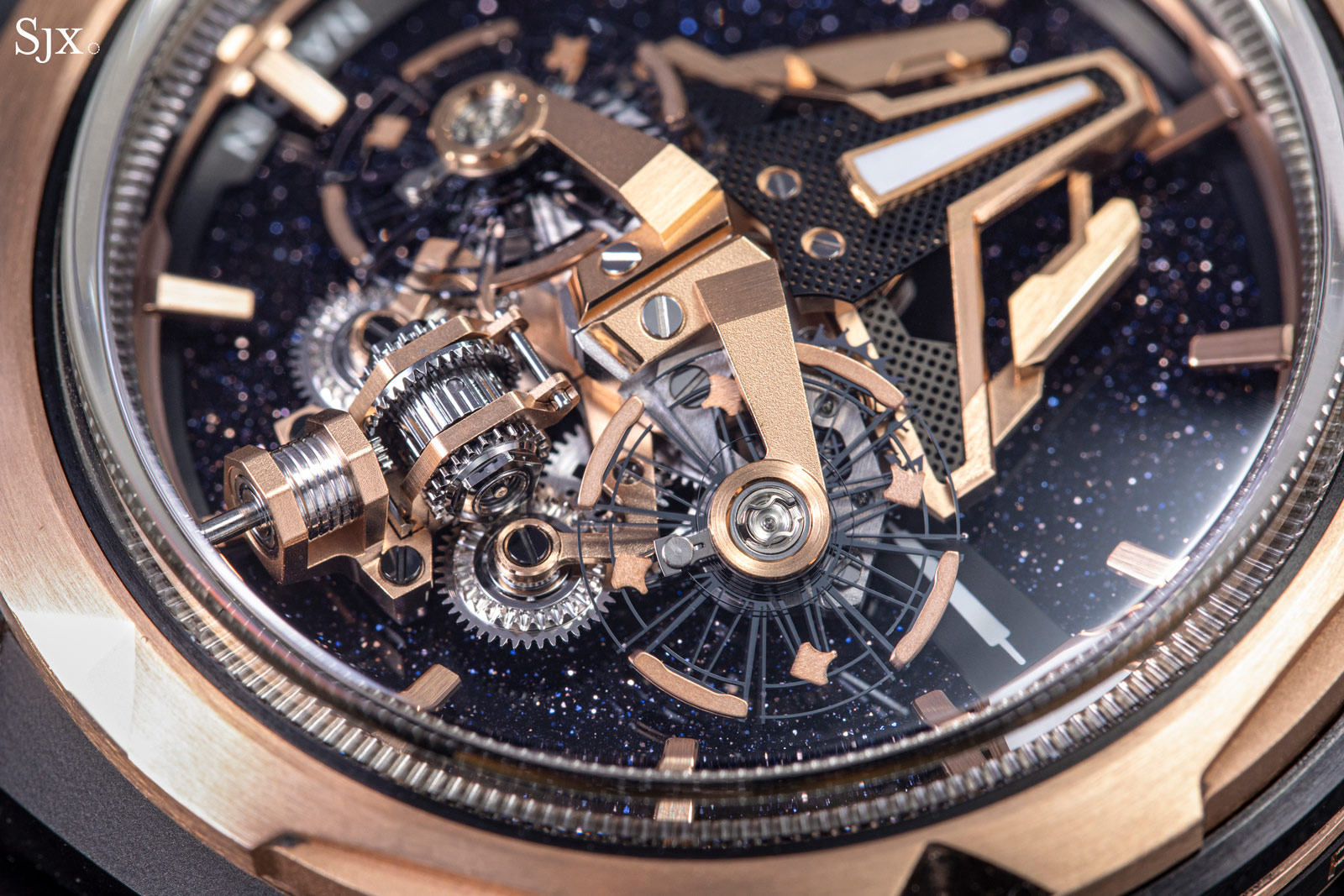
Initial thoughts
The landmark creation of the modern-day Ulysse Nardin (UN) brand, Freak was and still is interesting because it turns conventional movement construction on its head. Most of the moving parts are mounted onto a carousel on the dial that doubles up as the minute hand, while under the dial sits a massive mainspring that occupies most of the case volume.
No other watch combines unorthodox form and function like the Freak even though it was launched in 2001, well before most of today’s best known avant-garde timepieces. That was four years before Urwerk unveiled its satellite-cube hour display, for instance, ensuring the Freak’s place as a pioneering creation.
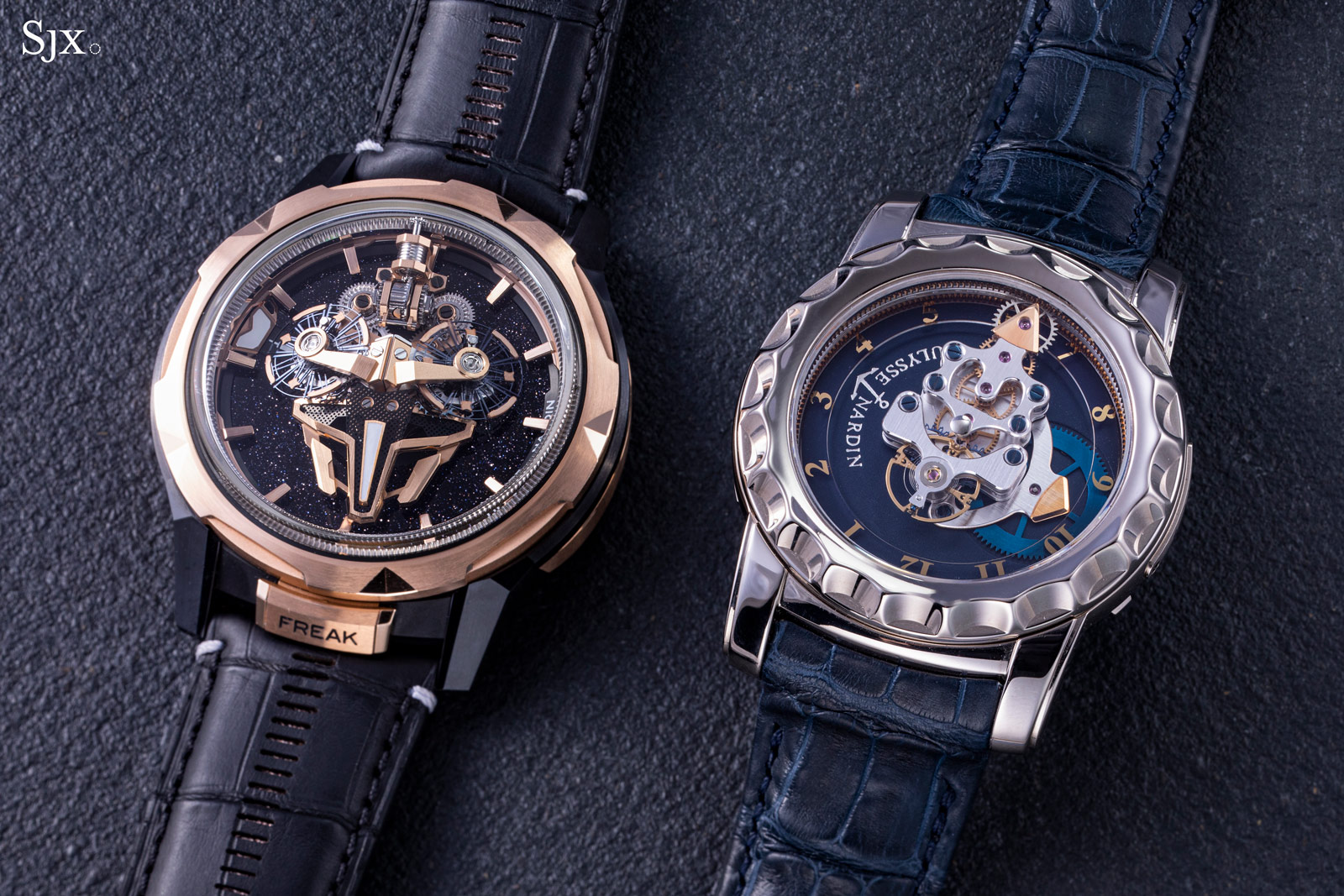
The Freak S (left) and the original Freak from 2001
While the essence of the Freak has been mostly retained over the various iterations since its launch, the appeal of the concept has been diluted by the many iterations since its launch – several dozen at last count.
The Freak S is the latest in a long line of Freaks, but it is arguably the best in terms of technical merits, aesthetics, and wearability. In fact, the Freak S is perhaps the best iteration since early 2000s because it has all the qualities that define a Freak, yet also boasts impressive new elements like the twin balances.
Watches with twin oscillators are objectively rare and often expensive (especially when it comes to Greubel Forsey’s iterations). Several of them are iconic, like the F.P. Journe Resonance and Philippe Dufour Duality. Within that rarefied segment, the Freak S still manages to set itself apart thanks to its exotic carousel construction and high-tech silicon oscillator, while being amongst the more affordable in the twin-balance category.
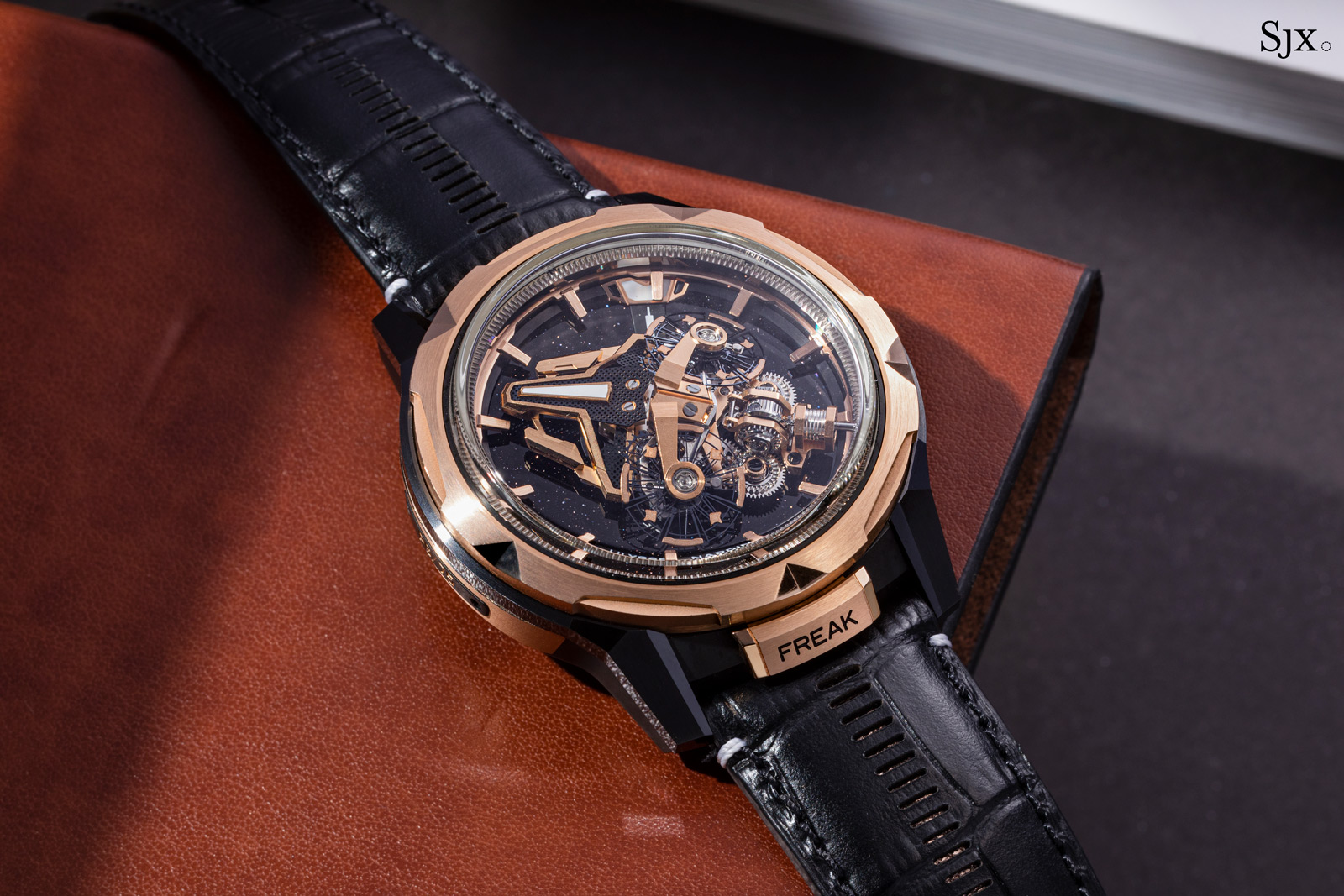
The Freak S is compelling from a technical standpoint not just in terms of visible features, but also because of improved functionality. Timekeeping, for instance, is superior – at least in theory – as the additional balance wheel helps offset beat rate errors in the other balance.
And the Freak S is kitted out with UN’s proprietary automatic winding system that keeps the watch running without having to resort to the tedium of winding the extra-long mainspring by hand as was the case with the earlier Freaks.
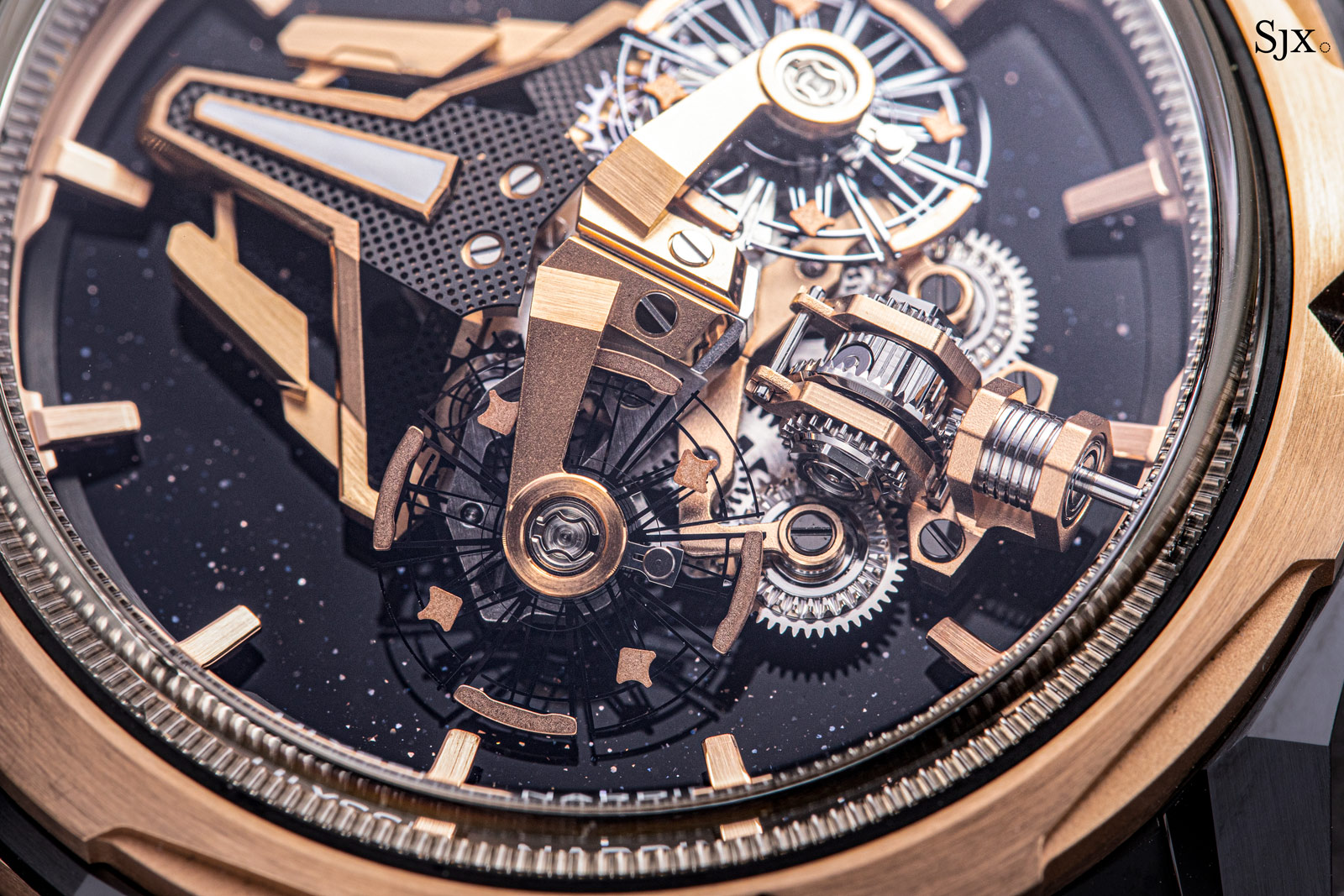
Beyond its technical merits, the Freak S is thoughtfully designed. It’s still contemporary and technical looking, but avoids being fancifully over-designed as some recent Freaks were. From the case to the movement, the aesthetic is sleek, futuristic, and coherent, a perfect fit for the intricate carousel.
Admittedly, a good deal of the aesthetics are attributable to the improvements in manufacturing technology, which is most obvious when comparing the Freak S with the 2001 original from 2001 that in hindsight has a simplistic, almost steampunk look.
An equally important quality – and one that might be overlooked – is the ergonomics of the Freak S. In contrast to the earlier generation models, the Freak S (as well as its siblings in the current range) sits well on the wrist. Shorter lugs and a strap that lacks an insert means comfort is massively improved.
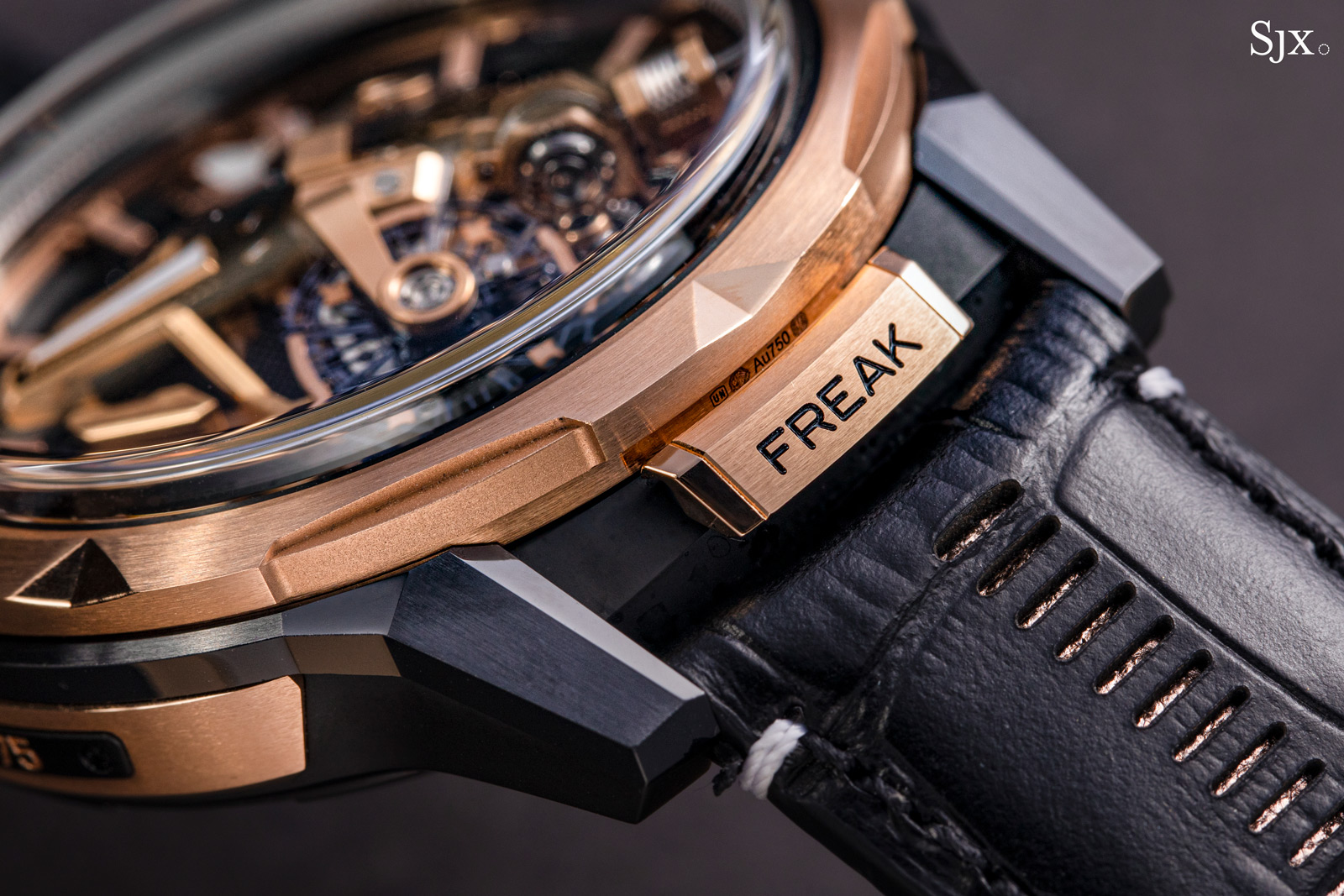
Almost everything that makes up the Freak is unusual or unique – from the carousel to the twin balances to the winding mechanism – and it is also greater than the sum of its parts. Considering that, the price tag of US$137,000 is eminently justifiable.
The number is in line with similarly complex watches by independent watchmakers, while being more affordable than comparable watches from establishment brands, though it has to be said there’s nothing really comparable to the Freak, S or otherwise.
Sci-fi styling
With lots of tight lines and sharp corners, the Freak S has an aggressively sci-fi aesthetic that matches its function perfectly.
Despite sharing a similar movement construction, the Freak S bears little resemblance to the earliest Freaks, due in large part to the angular and sculptural carousel. In fact, the dial barely looks like the face of a watch. If you didn’t know where to look, you wouldn’t know it told the time.
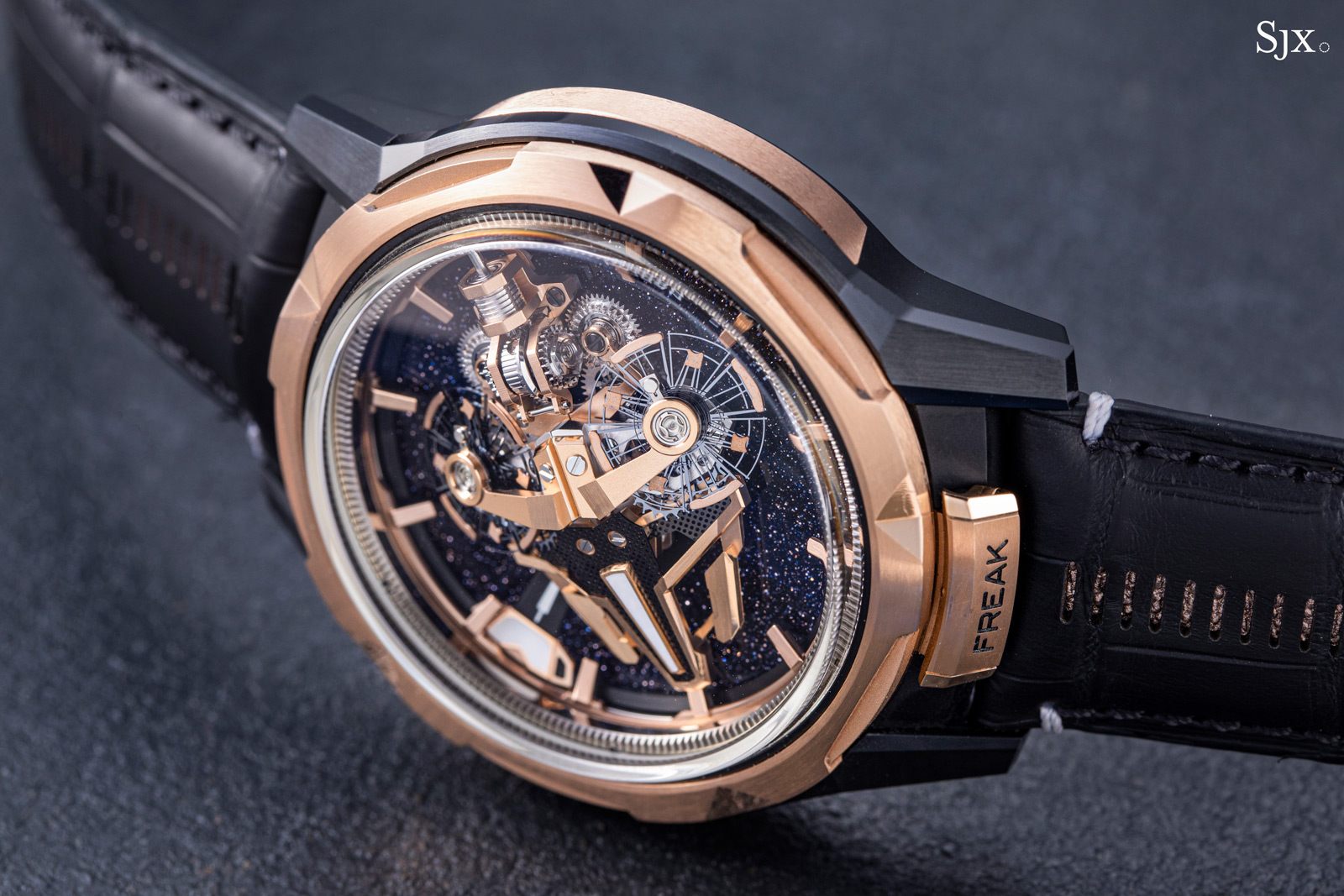
While its predecessors had to make do with a one-dimensional, plainly shaped carousel, the Freak S does it in three dimensions. The carousel resembles a space ship kept aloft by two large turbines on either side.
Thanks to its many components, namely the second balance and differential, the carousel is massive. Its designers smartly play up the scale of the carousel by giving it prominent gilded bridges and perforated panels.
While watches with a similar high-tech aesthetic often lean towards dark colours, the Freak S uses a lot of gold-plated components, a smart choice that gives it a slightly more luxe appearance while creating better contrast against the dark dial and steel wheels of the differential.
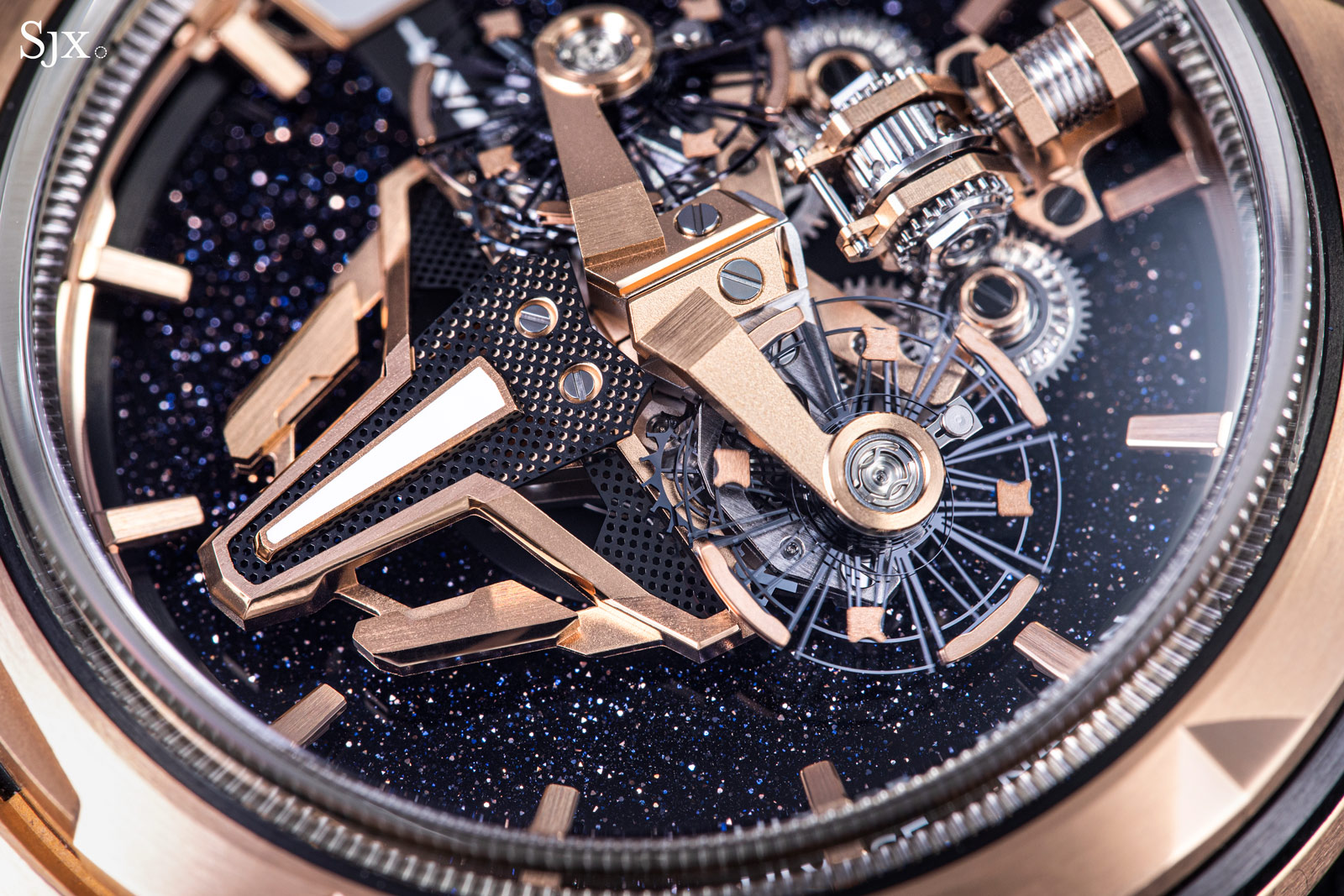
In fact, the design of the carousel might be too much. The perforated panels on the minute pointer, for instance, serve no function except to dress up an already complex structure.
There’s a lot going on so it’s difficult for the eyes to focus on any one detail. Simplifying the overall aesthetic would better highlight the key components, namely the balances and differential.
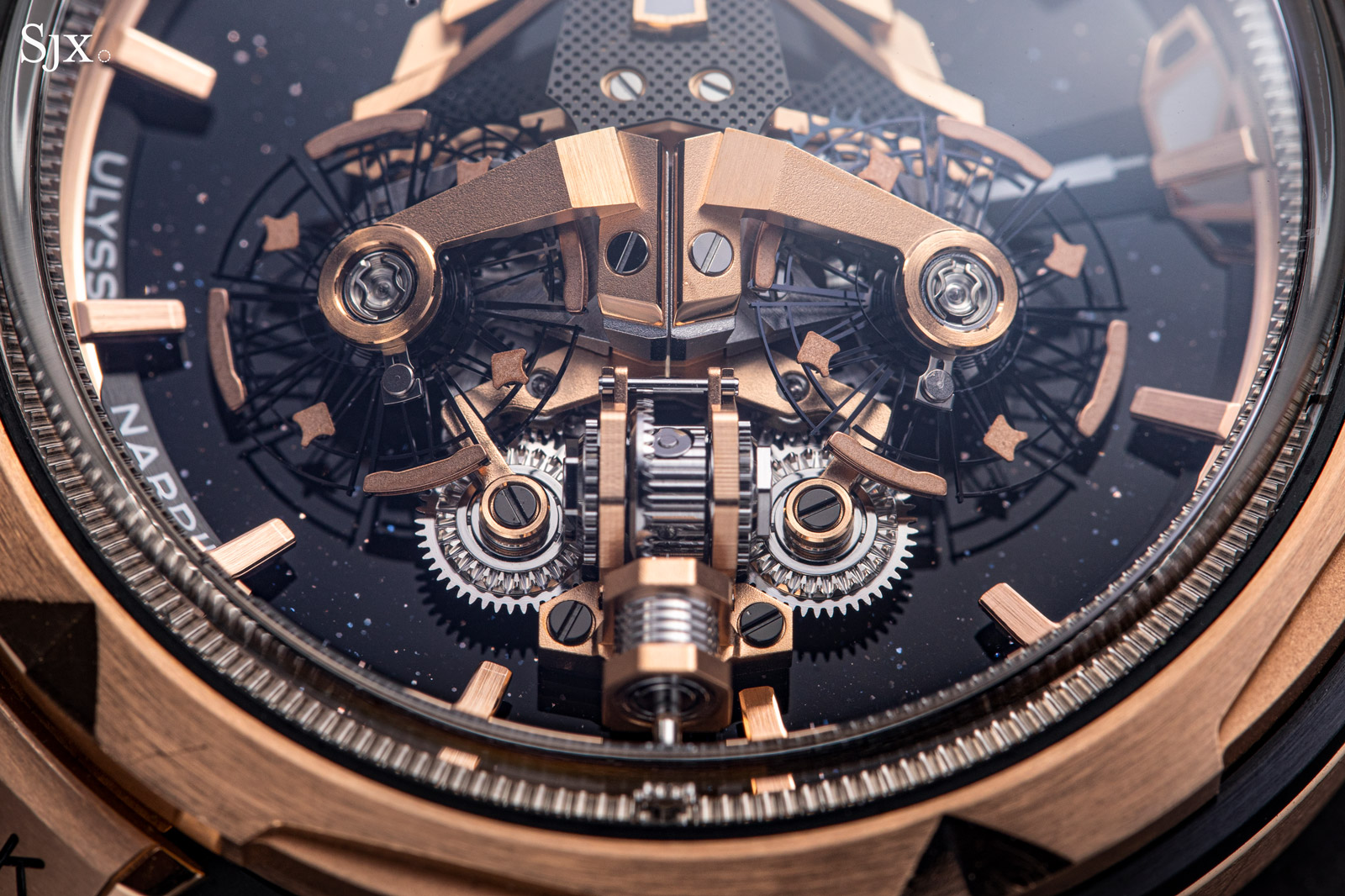
The incredibly complex view of the differential and twin oscillators
The outer-space theme of the carousel is accentuated by the aventurine glass inlay over the barrel cover. Though aventurine glass is novel for UN, it has been used increasingly frequently as a decorative material in the Freak collection. Unlike most aventurine glass dials where the material is the centrepiece, the sparkly glass glitters but fades into the background simply because the spaceship carousel is overwhelming in visual terms.
While I like the magnificently sci-fi design of the face, I find the case design too angular. The case has many sharp angles and facets, probably more than necessary. In itself it’s a good iteration of the original Freak and its “bottle cap” bezel, but it isn’t necessary given how intricate the dial is.
That said, all that detail means the case is impressively executed. The case is probably as complex as a round case can be; its creators have managed to pack in a surprising number of angles, facets, and recesses, along with a highly domed crystal.

A closeup of the bezel and case
At 45 mm in diameter, the Freak S is more or less the same size as past Freak models, but it doesn’t feel quite as big. And more importantly, it feels smaller on a wrist.
The fact that the case isn’t too tall helps – because the crystal accommodates part of the movement’s height – as do the short lugs. Equally useful is the conventional strap without an insert at its ends. In contrast, most of the past Freak models utilised integrated straps with stiff inserts that meant they didn’t sit well on many wrists.
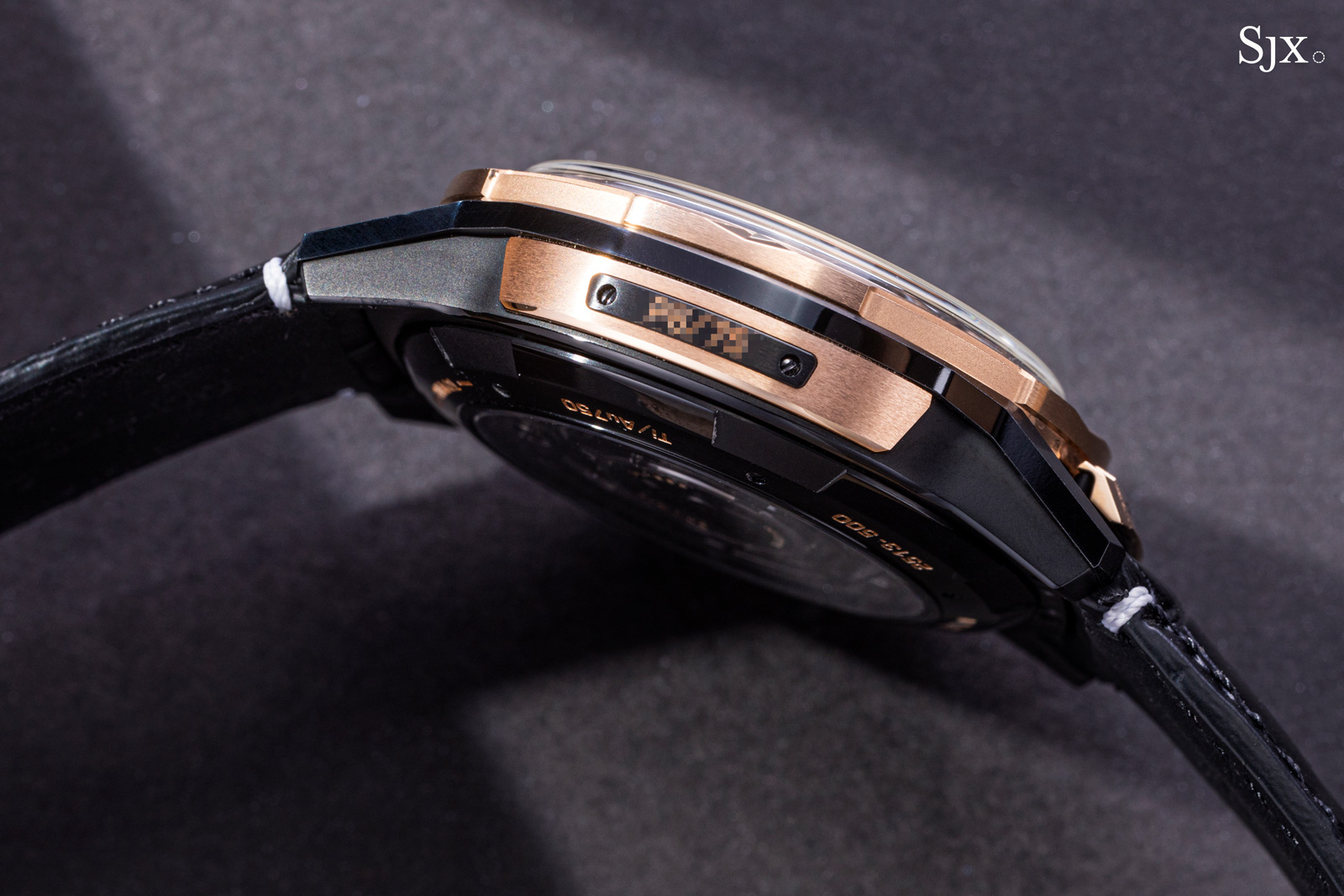
As is tradition at UN, the serial number is engraved on a plaque screwed into the case side
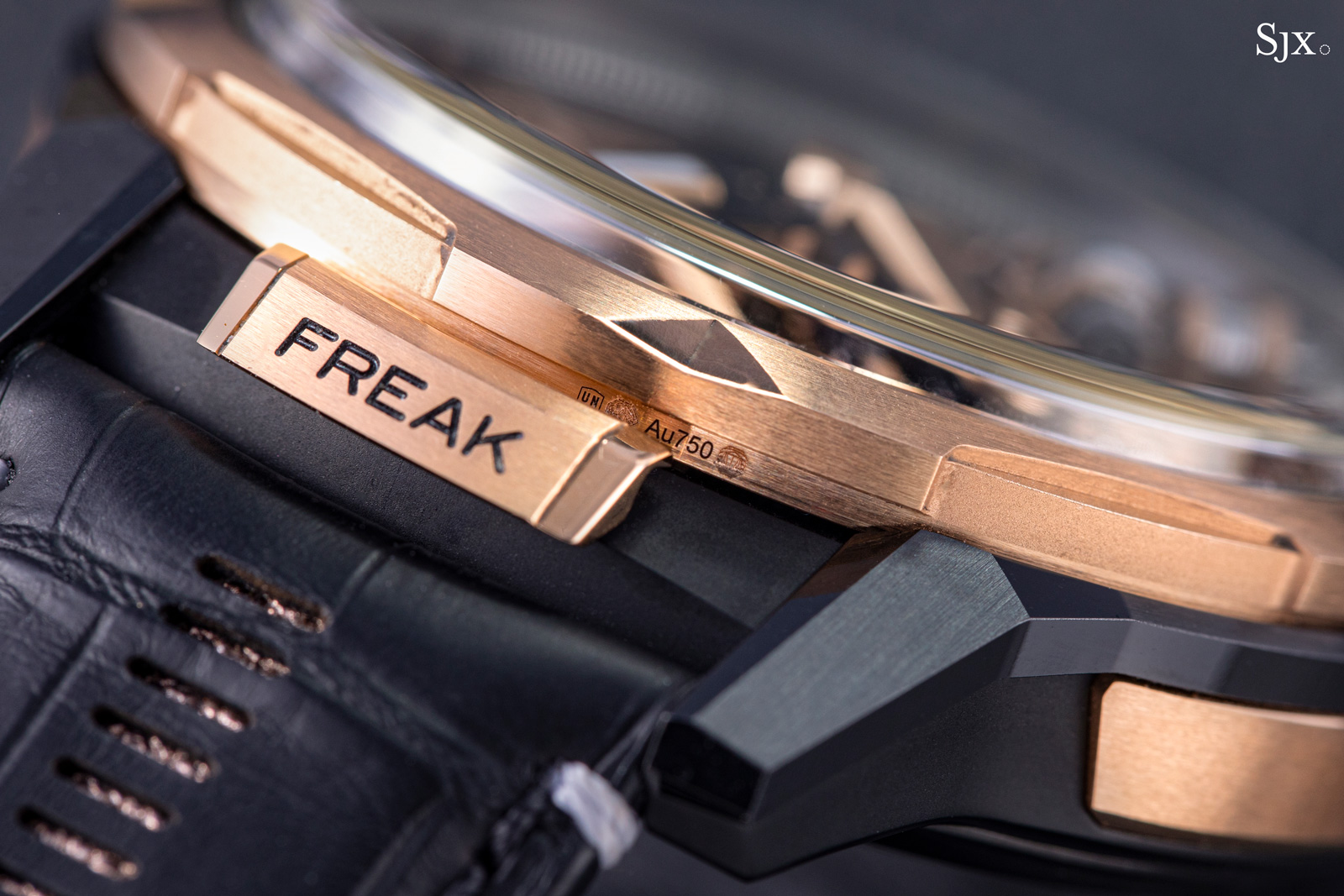
The case is a blend of ceramic, black-coated titanium, and rose gold
Going round and round
As is customary for a Freak, the Freak S does without a hands and dial of the conventional sort. But it still tells the time – with the movement as the hands.
With the hands eliminated, the moving parts of the watch can occupy the freed-up space under the crystal. In fact, except for the mainspring and winding system, the entire movement sits on the dial. In true Freak fashion, the gear train and balance assembly are contained within a central carousel shaped like a space ship.
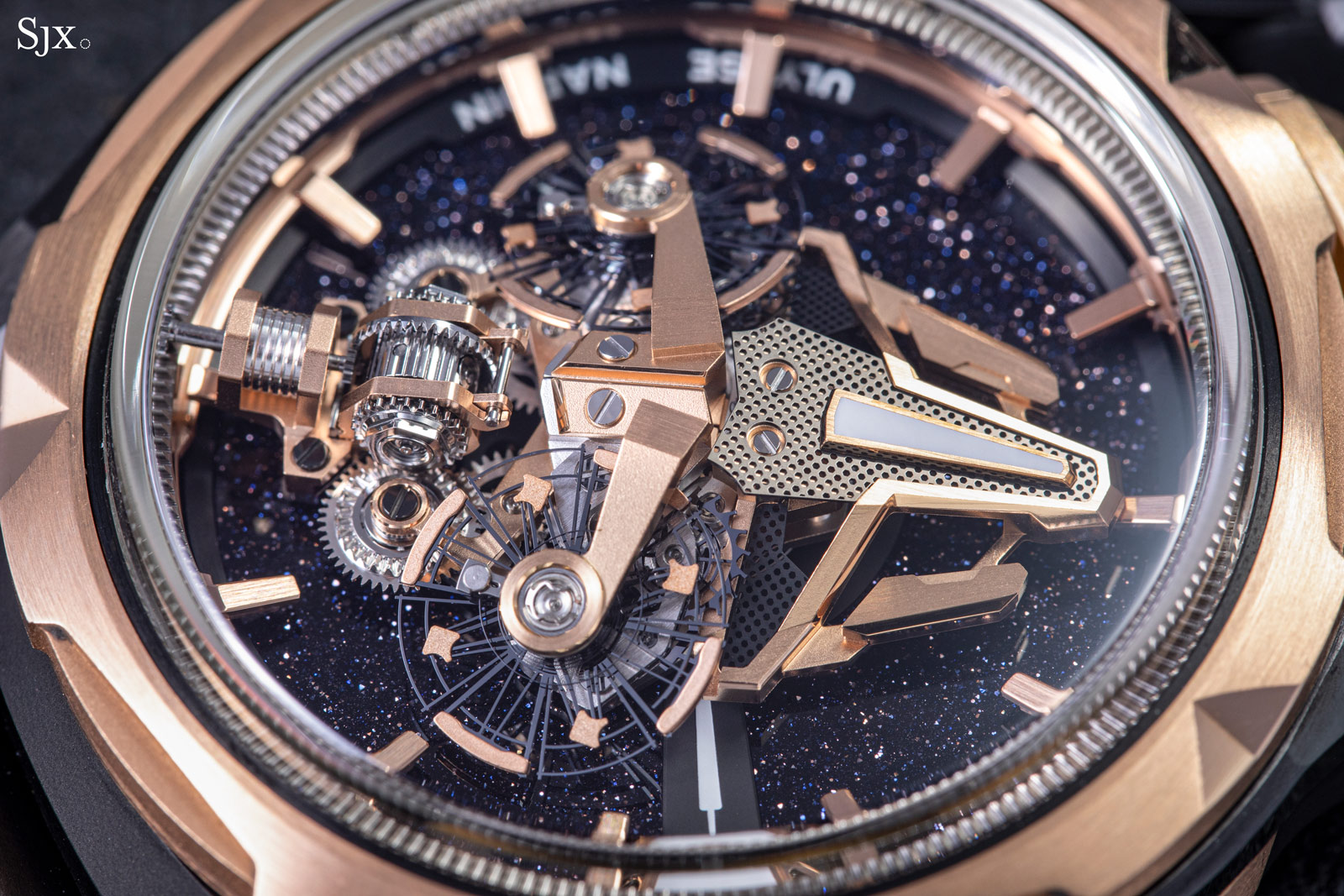
The setup is also the reason for the huge mainspring – enormous amounts of energy are required to continually move the carousel, going train, and oscillators around the dial. To be fair, the Freak concept is an answer to its own question but it is a brilliant, unorthodox idea executed well enough that it makes sense.
The operation of the Freak S contrasts with the entry-level Freak X that is far more conventional in construction. It’s powered by a standard movement, but reconfigured to have the only balance and escapement sitting over the dial – Freak “lite” in other words.
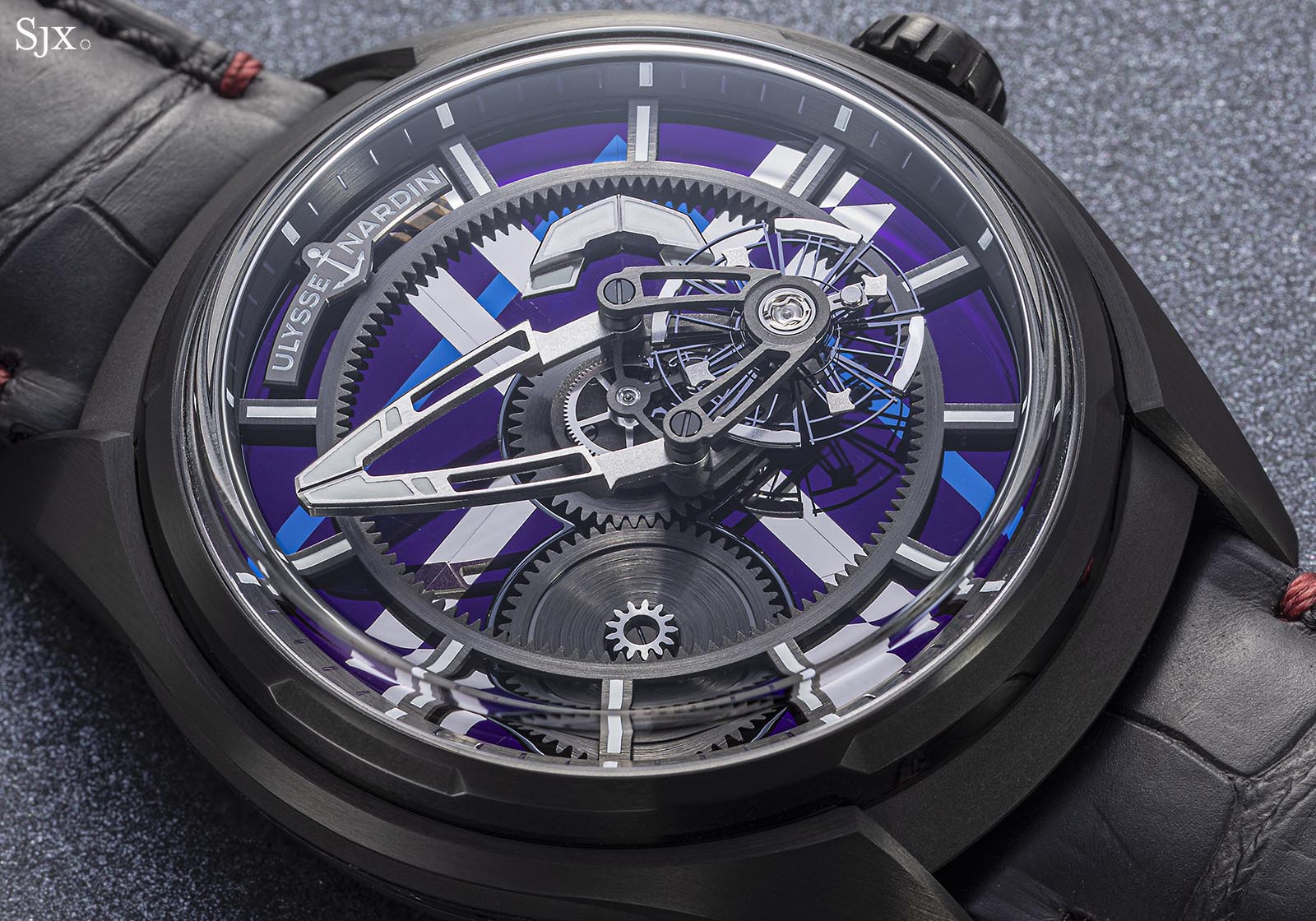
Despite superficial similarities, the Freak X has only the balance and escapement on the carousel, with the rest of the movement, including the gear train, below the dial
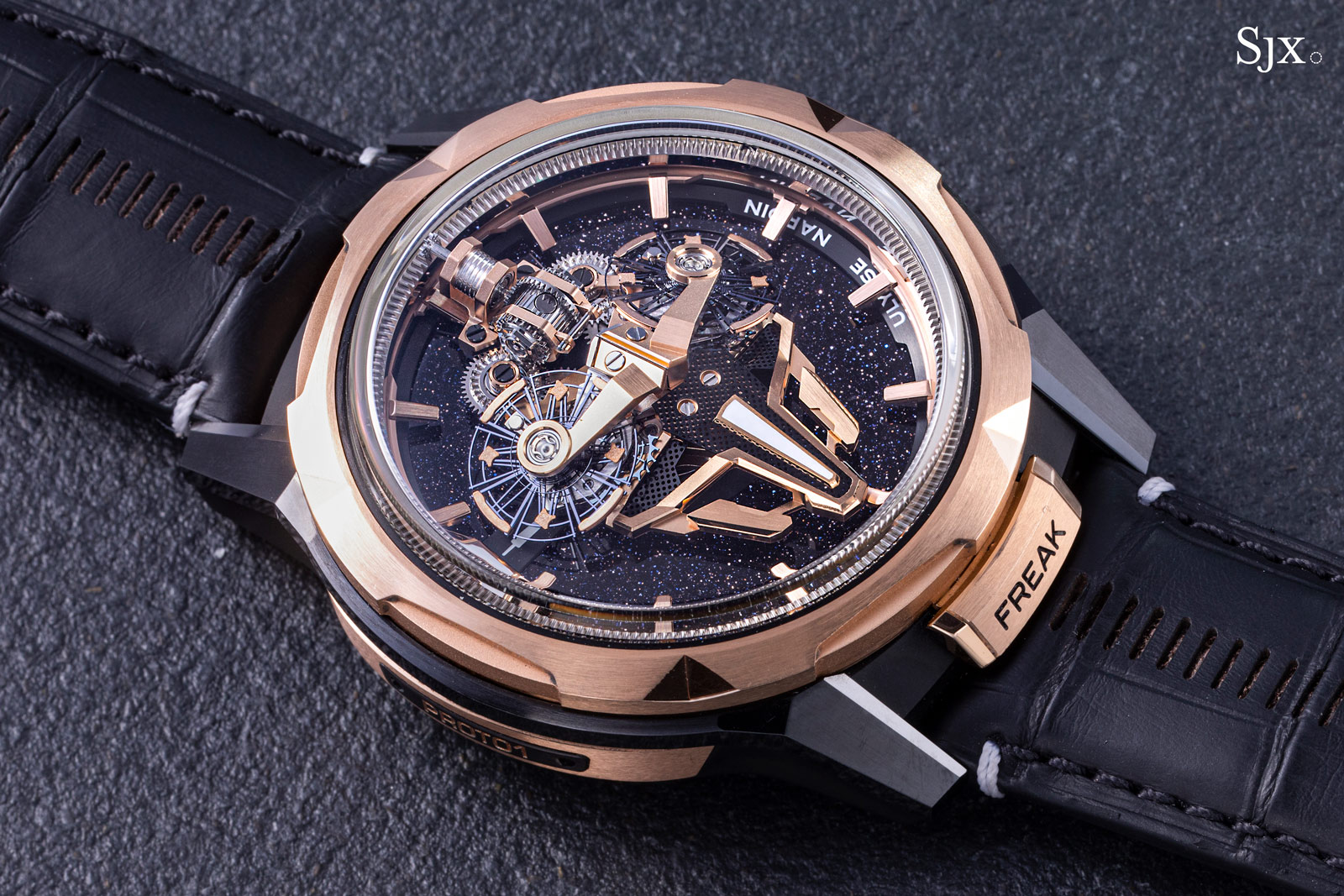
The complexity of the Freak S is instantly obvious when compared side by side
The central carousel rotates once every hour and serves as the minute hand, while the disc under the carousel rotates once every 12 hours, making it the hour indicator. The concept seems simple enough, but it’s worth exploring just how the Freak transforms the movement into time indicators. The Freak first did that two decades ago, but it’s still a feat.
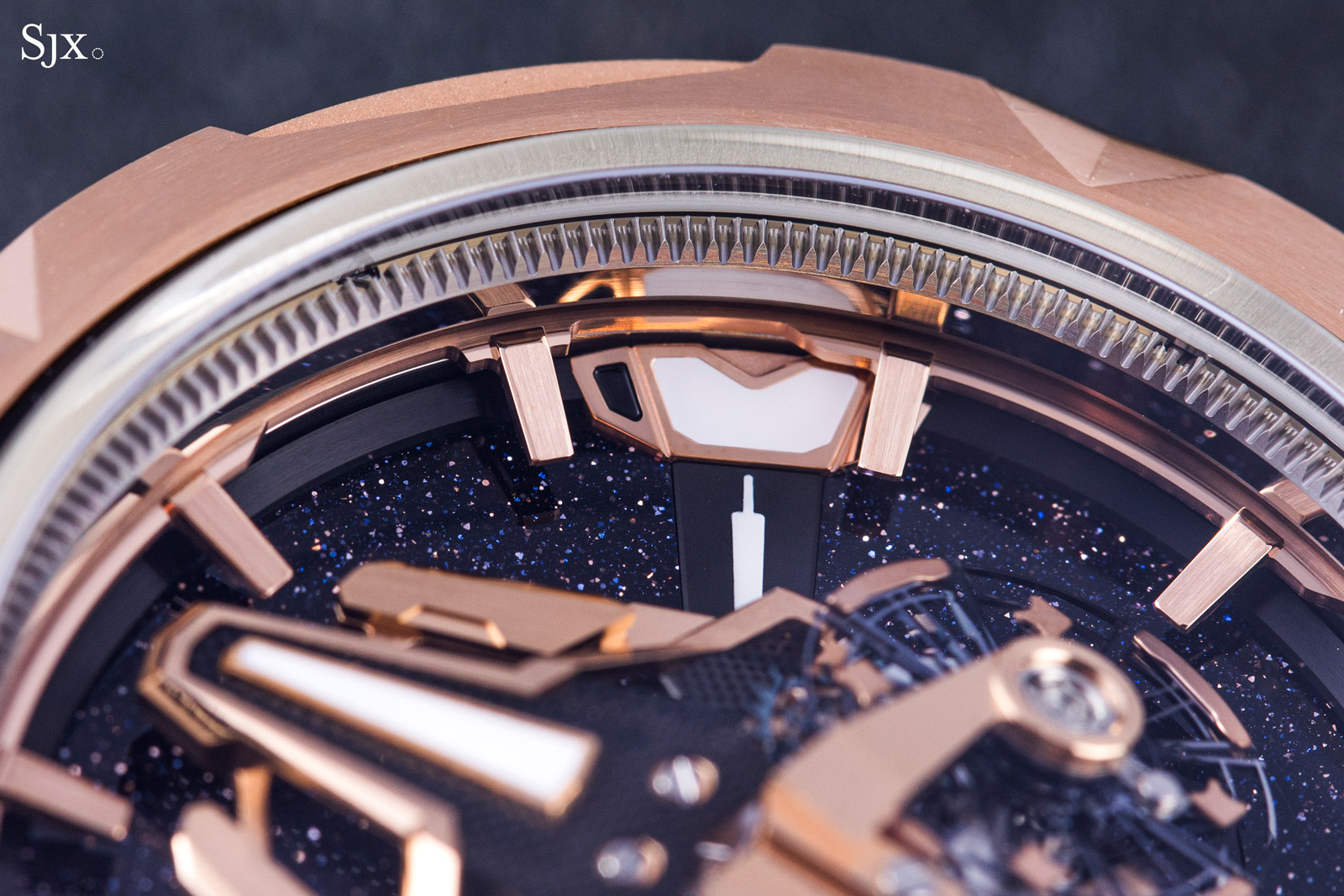
The hour pointer
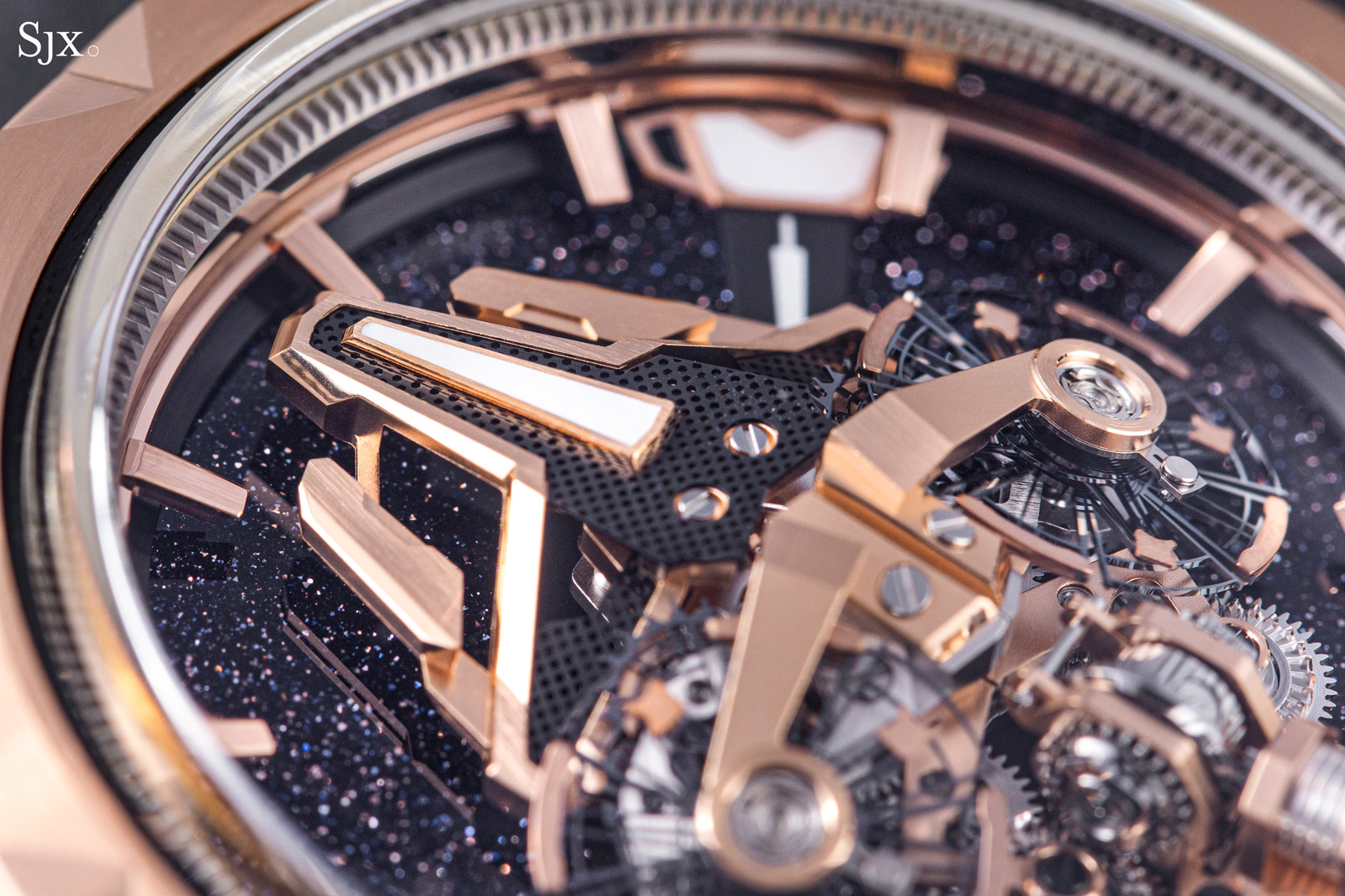
And minute pointer
The starting point is breaking down the movement into its three main constituents: gear train, barrel, and winding mechanism. Each of these constituents are almost wide as the case and they sit stacked one on top of another in the order above (starting with the winding mechanism closest to the wrist).
Because the barrel is almost large as the case diameter, the barrel cover becomes the dial. Here the barrel cover is inlaid with a disc of aventurine glass topped with a fixed, gilded hour pointer. As the barrel unwinds – the barrel makes one revolution every 12 hours – the cover rotates and along with it the hour pointer indicates the current hour.
On top of the barrel cover sits the carousel, but thanks to a set of gears hidden under the aventurine disc, the carousel rotates at a quicker rate than the one-rotation-every-half-day of the barrel cover. Specifically, the gears have a ratio of 1:12 between the barrel and carousel, creating a multiplier effect so the carousel moves 12 times as fast as the barrel cover – or one rotation every hour – allowing it to indicate the minutes.
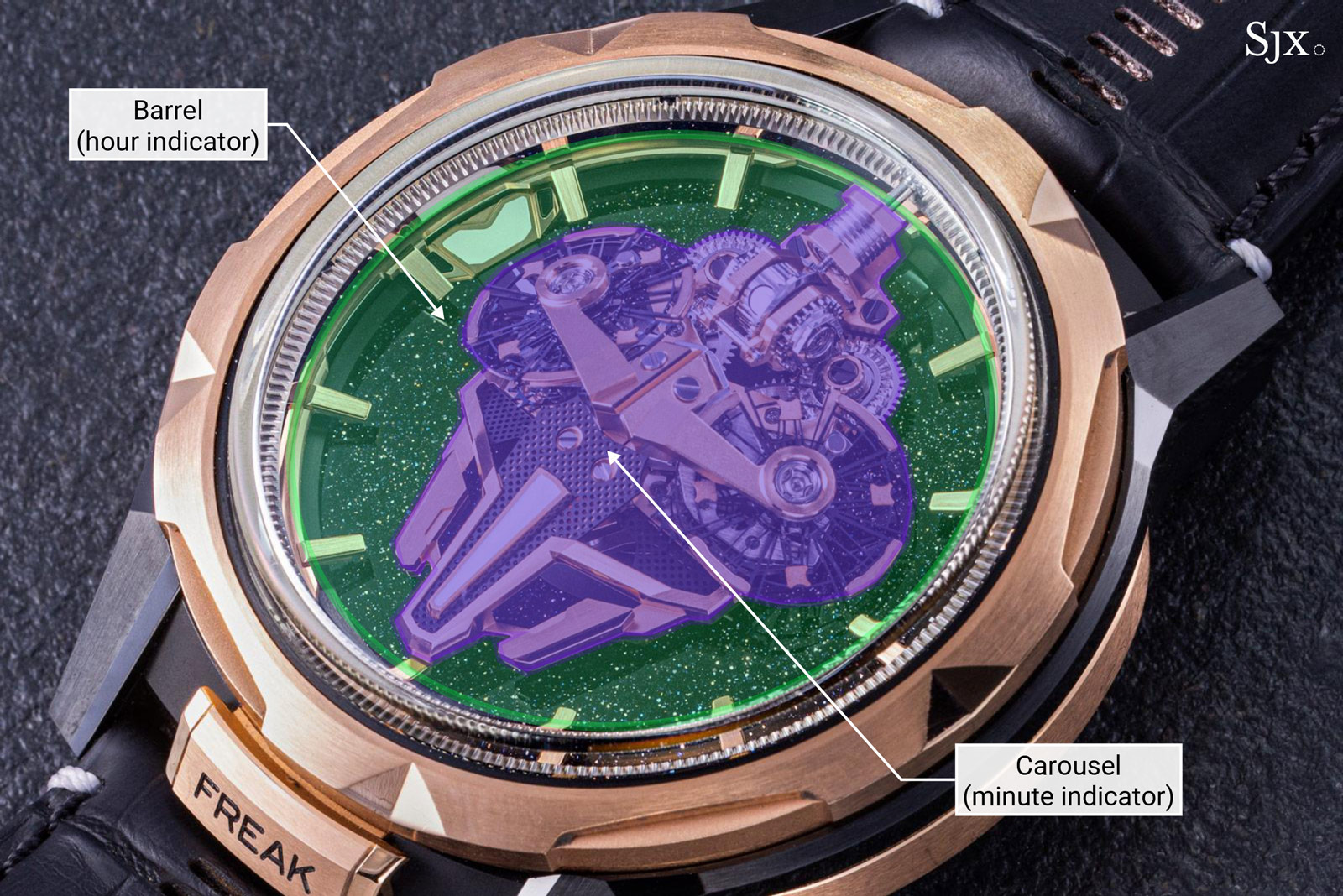
However, the rotation of carousel does not drive the gear train contained within it; the carousel merely points to the minutes. Instead, a tiny pinion at one end of the carousel links it to the fixed ring-gear on the periphery of the dial. As the carousel rotates, the fixed ring-gear forces the pinion to turn, which transmits energy to the gear train and twin oscillators.
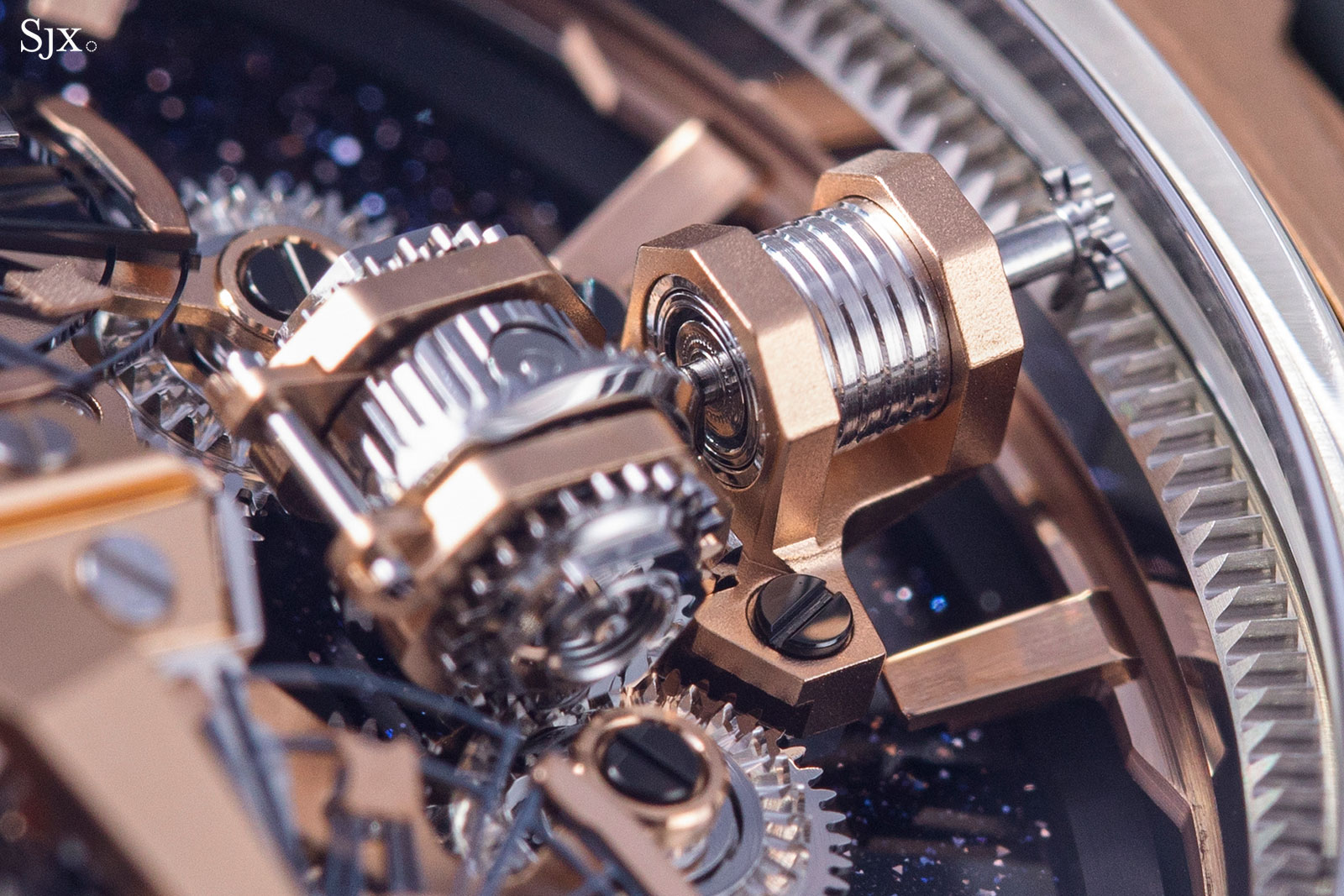
The differential and the tiny pinion driven by the fixed ring gear
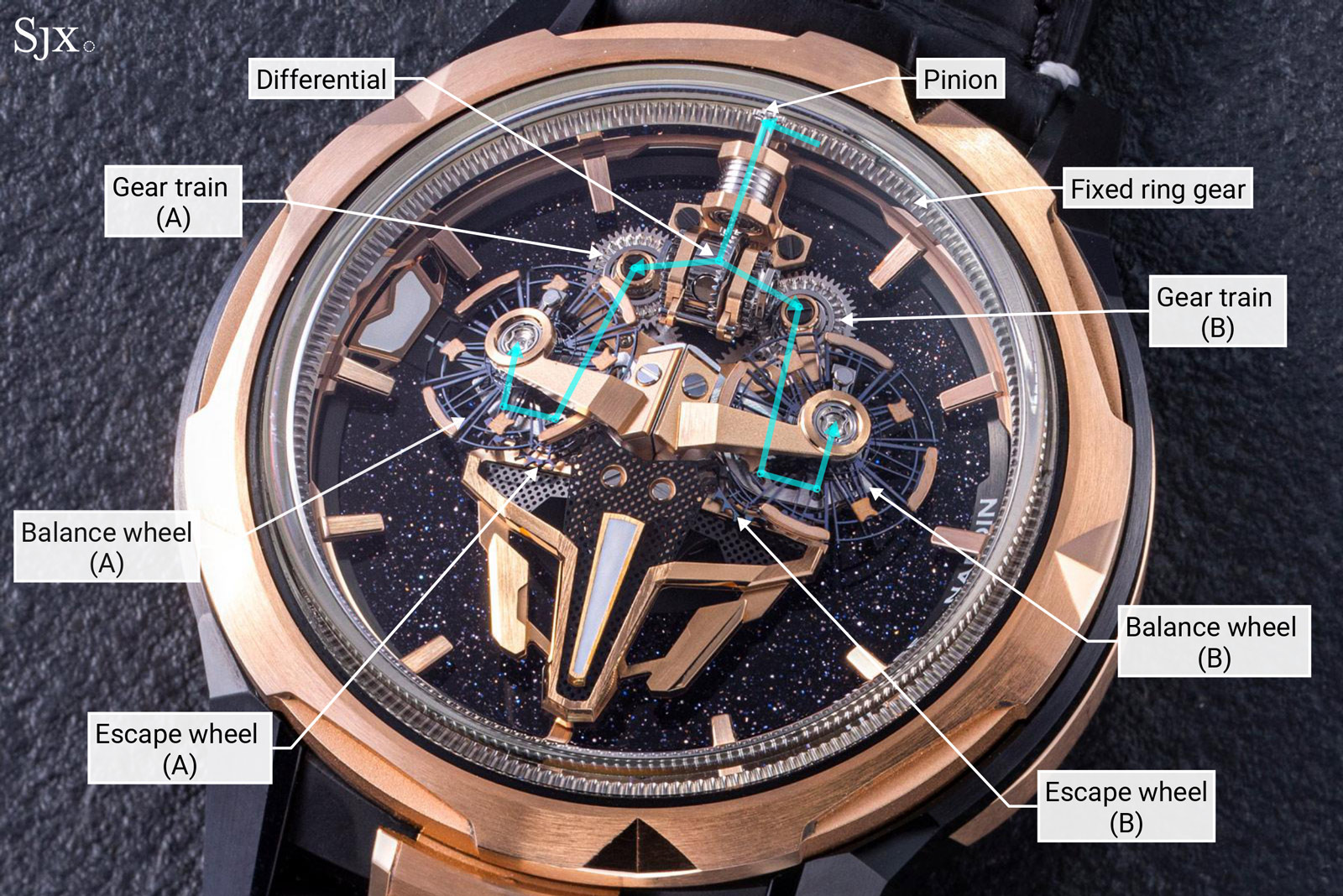
Power flows from the fixed ring gear to the balance via the path set out in light blue
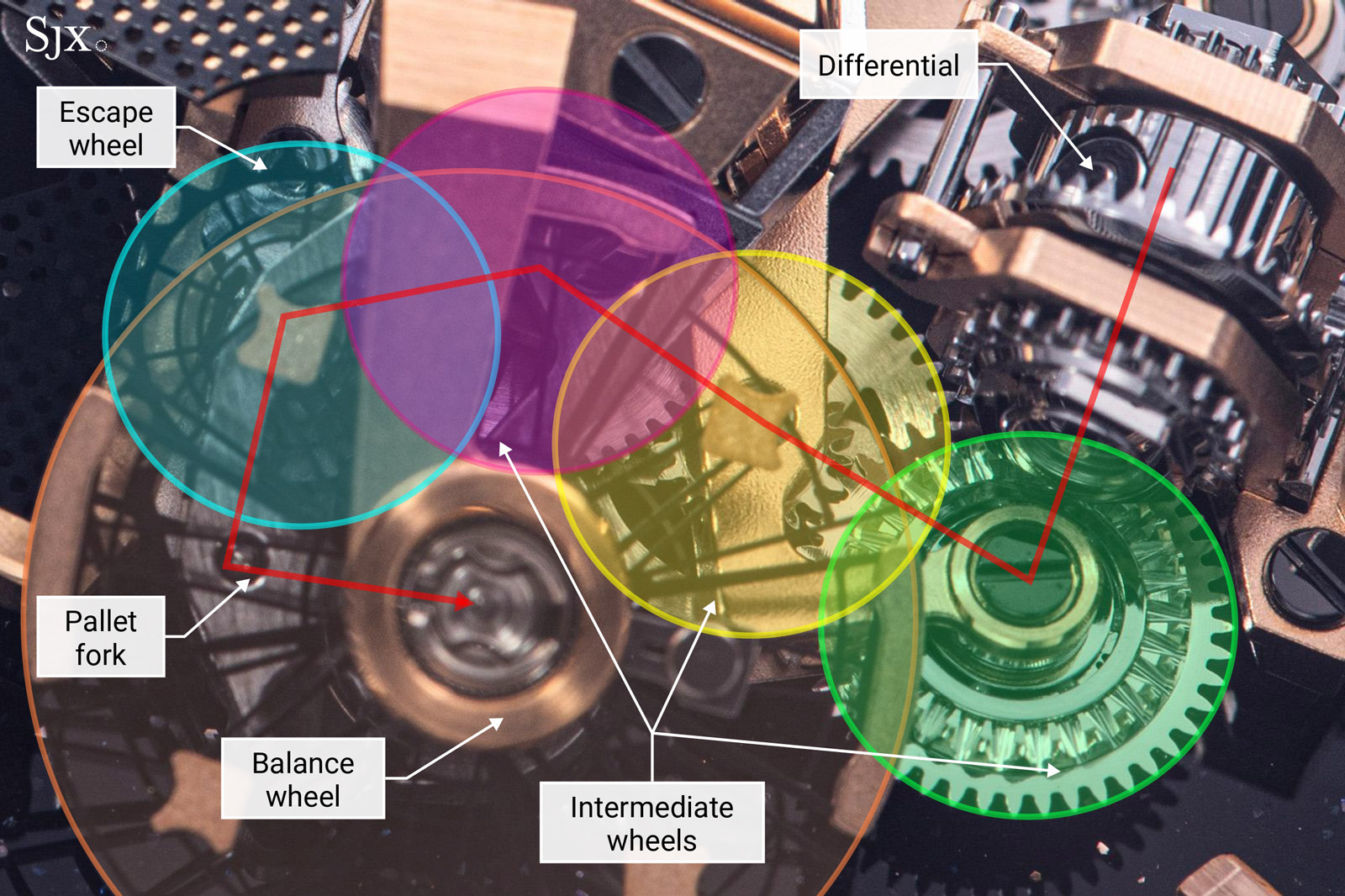
A close up wheel of the gear train
Twin balances
The final piece of the puzzle is the oscillator. Perfectly-timed rotation of both the barrel and carousel depend on the oscillator, the heart of the Freak S as it is in any mechanical watch. The oscillator, or more accurately the escapement, allows the mainspring to release its stored energy steadily in fixed amounts. In other words, if the oscillator is ticking out of beat, the barrel may unwind faster or slower, which means the time shown will be ahead or behind the actual time.
In the pursuit of perfect timekeeping, UN experimented with materials from day one – the original Freak was the first serially-produced watch to use the then-exotic material of silicon in the movement, in the form of an all-new “Dual Direct” escapement with twin silicon escape wheels.
The Freak S is two decades ahead of the original in its use of the material, which makes up the escapement, hairsprings as well as balance wheels. It makes liberal use of silicon, but its chronometric performance also hinges on the second balance wheel.
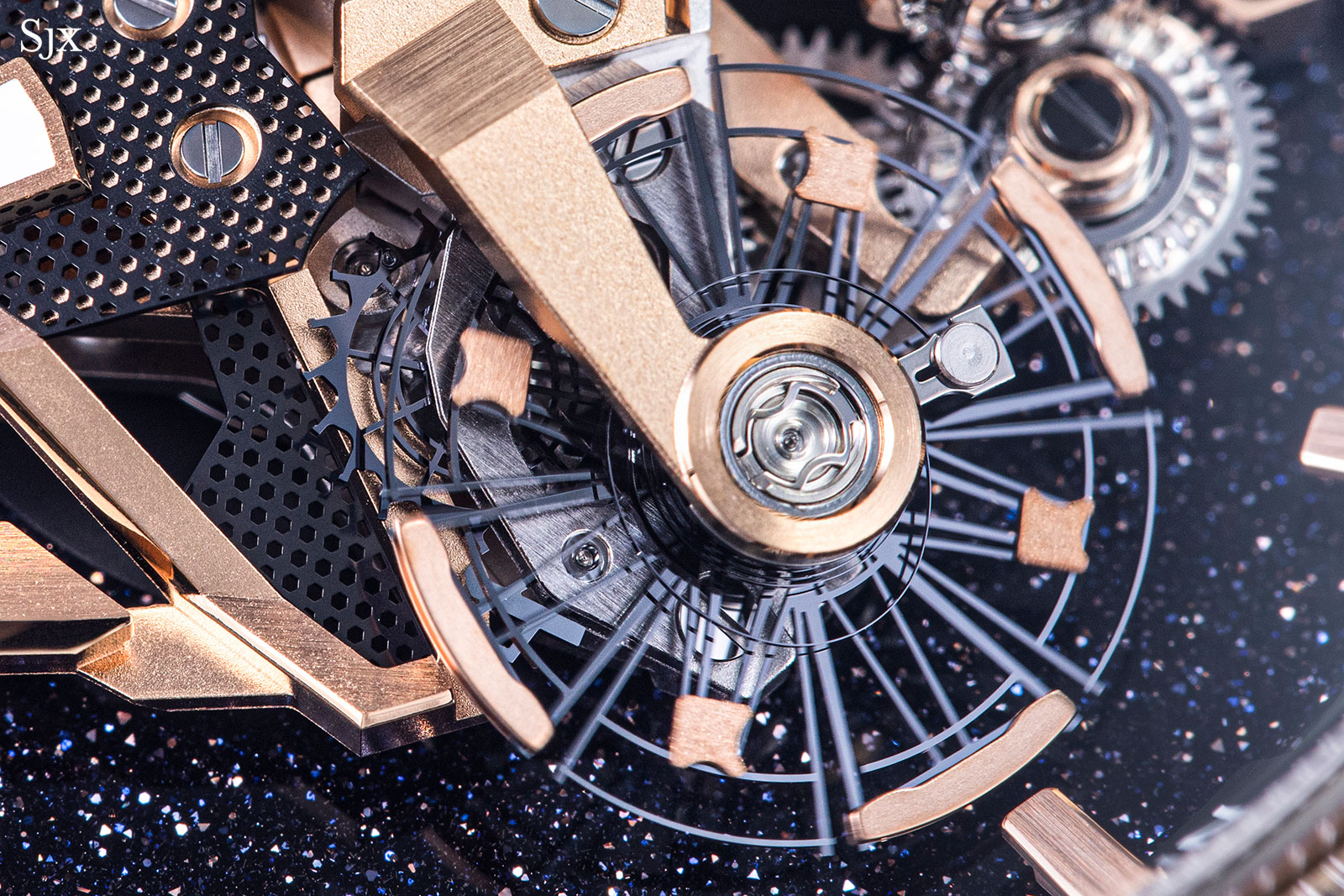
The free-sprung balance is fitted with “micro-blades” that utilise air resistance to boost its stability
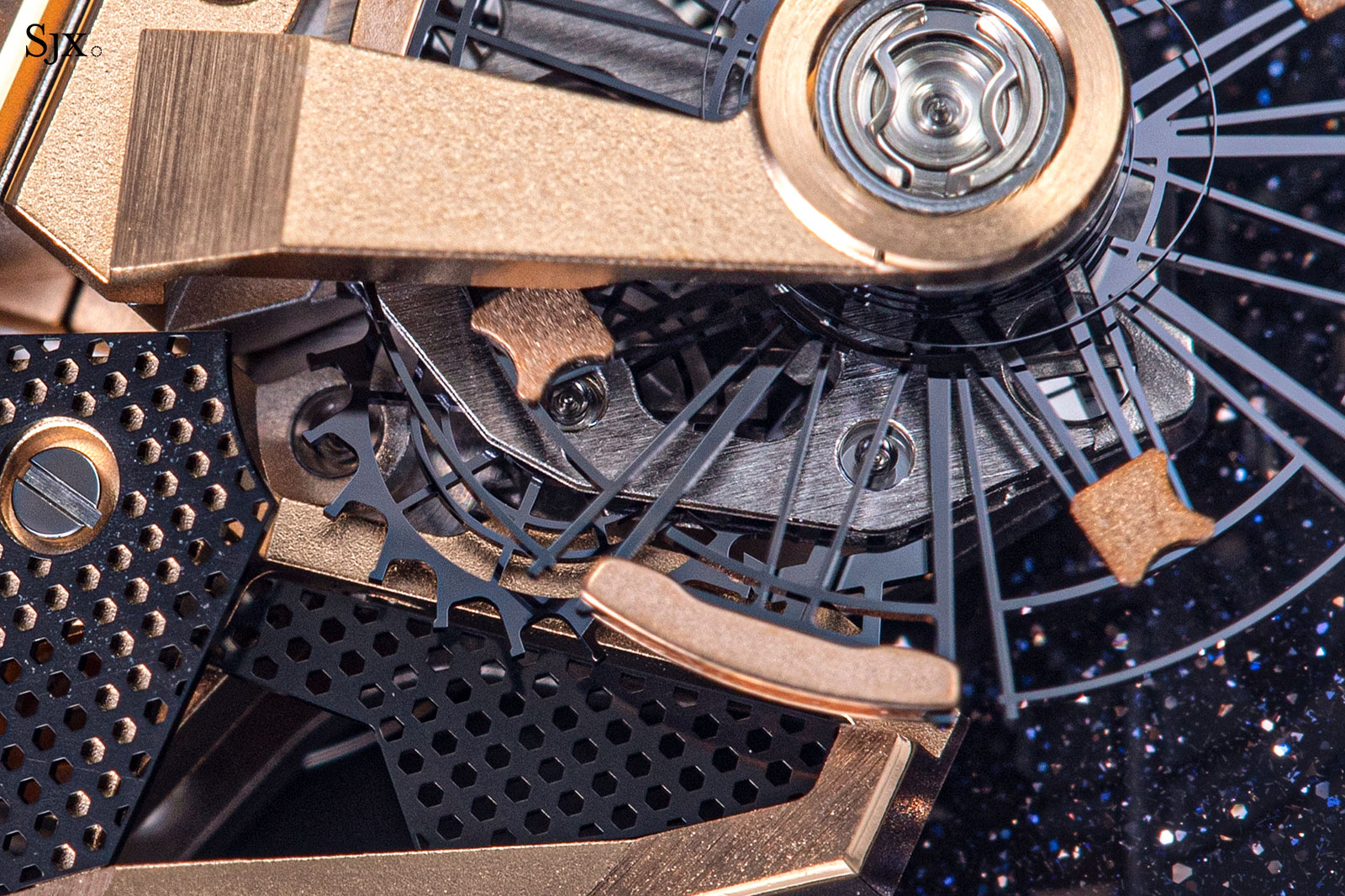
The skeletonised escape wheel and balance, both in silicon
Various systems have been invented over the centuries to maintain a consistent oscillation frequency of the balance. The best known is perhaps the tourbillon, which averages out positional errors by constantly changing the position of the balance.
Another example is the constant force mechanism that smoothens out the energy supply to the oscillator, ensuring it receives a fixed dose of energy every time. And of course there’s the famous invention of Francois-Paul Journe, the Resonance that relies on twin, resonating balances to produce stable amplitude.
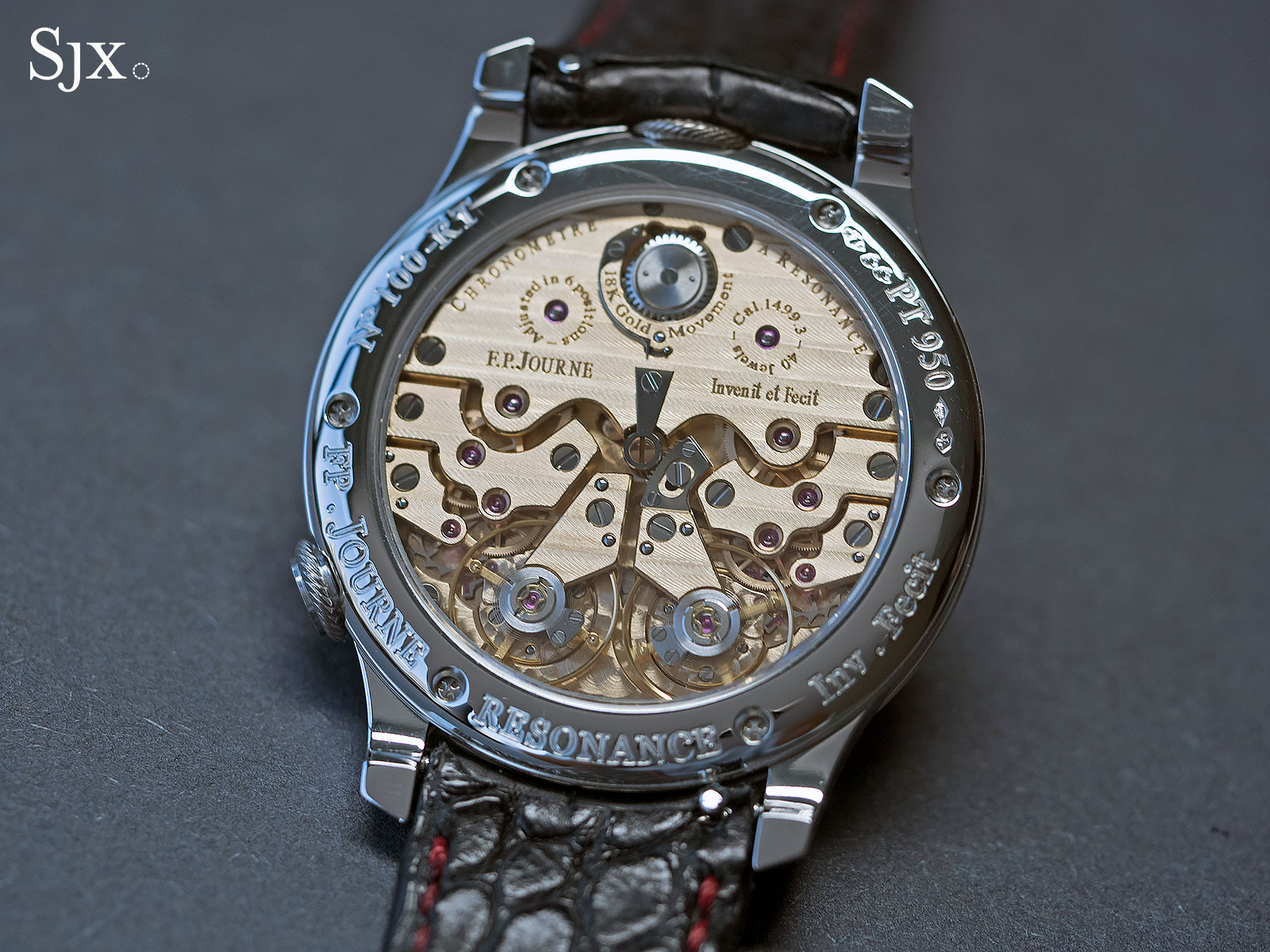
In contrast to the Freak S that has a mechanical link between the twin balances, the F.P. Journe Resonance has no mechanical link between the two and instead relies on the principle of resonance
The Freak S, on the other hand, opts for two balance wheels connected by a differential. A differential is an intermediate device that connects two sets of gears and outputs the average of the two. A car, for instance, is equipped with a differential so that its wheels can spin at a different speed when the car makes a turn.
The differential in the Freak S averages out the beat rate of each balance wheel, so that errors within each balance are averaged out across both of them. For example, if one balance is running at +3 seconds a day and the other, -3 seconds a day, then the differential averages out the two to a perfect zero seconds a day.
Each balance wheel beating at the inverse of the other is an ideal scenario for the differential to work its magic. At the other extreme, both balances beat at the exact same rate, leaving the differential nothing to average out. If both balance wheels are running at +3 seconds a day, the output will be +3 seconds a day. In such a scenario, the twin balances wheels will keep time as if they were a conventional single balance linked to a standard gear train.
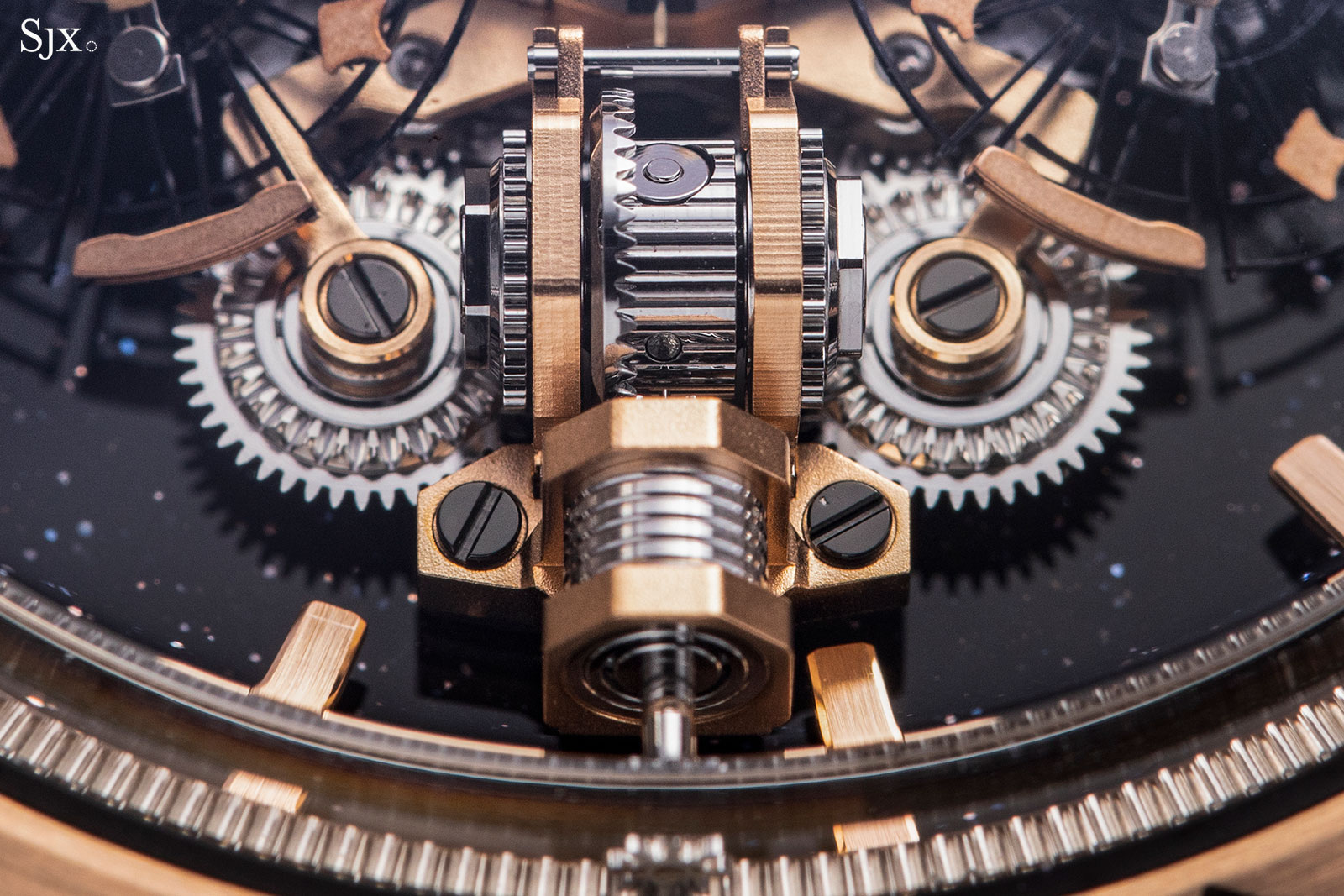
The differential
But the fact that both balance wheels are inclined at different angles and constantly rotated by the carousel means that both balances will never be in the same position. Consequently, gravity will act differently on each balance.
In fact, gravity should be the key factor behind any rate variation in either balance, since the liberal use of silicon means that both balances won’t be affected by regulation or lubrication as silicon parts need neither adjustment nor oiling.
As a result, the two balances will most likely have slightly different rates and varying errors, making the differential an ideal intermediary for chronometric performance.
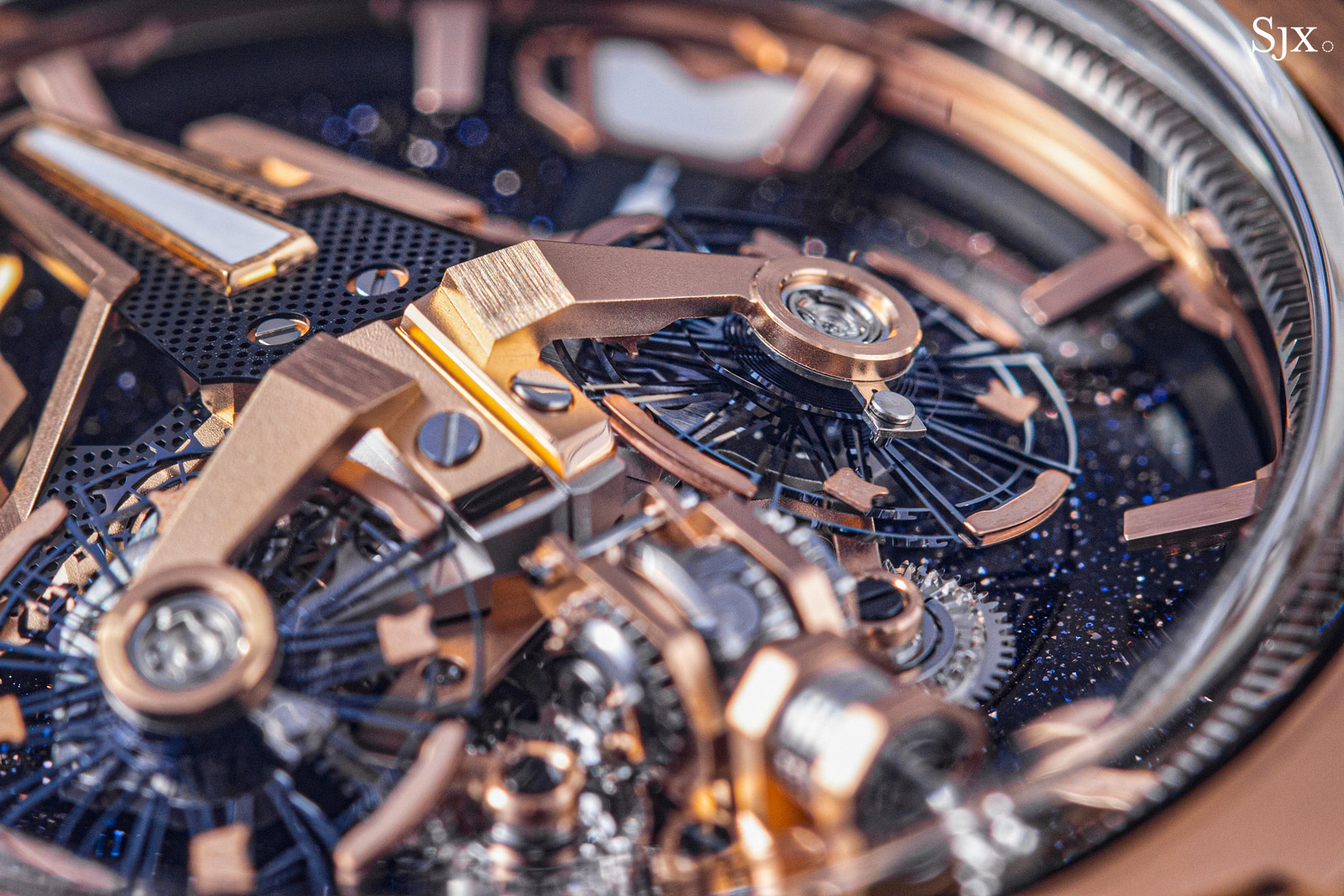
The chronometry of the Freak S is academic since it doesn’t indicate seconds and the twin balance wheels are difficult to capture on a timing machine. But the twin balances are nevertheless interesting, both technically and visually. They are a logical evolution on the original Freak concept and add substantially to the appeal.
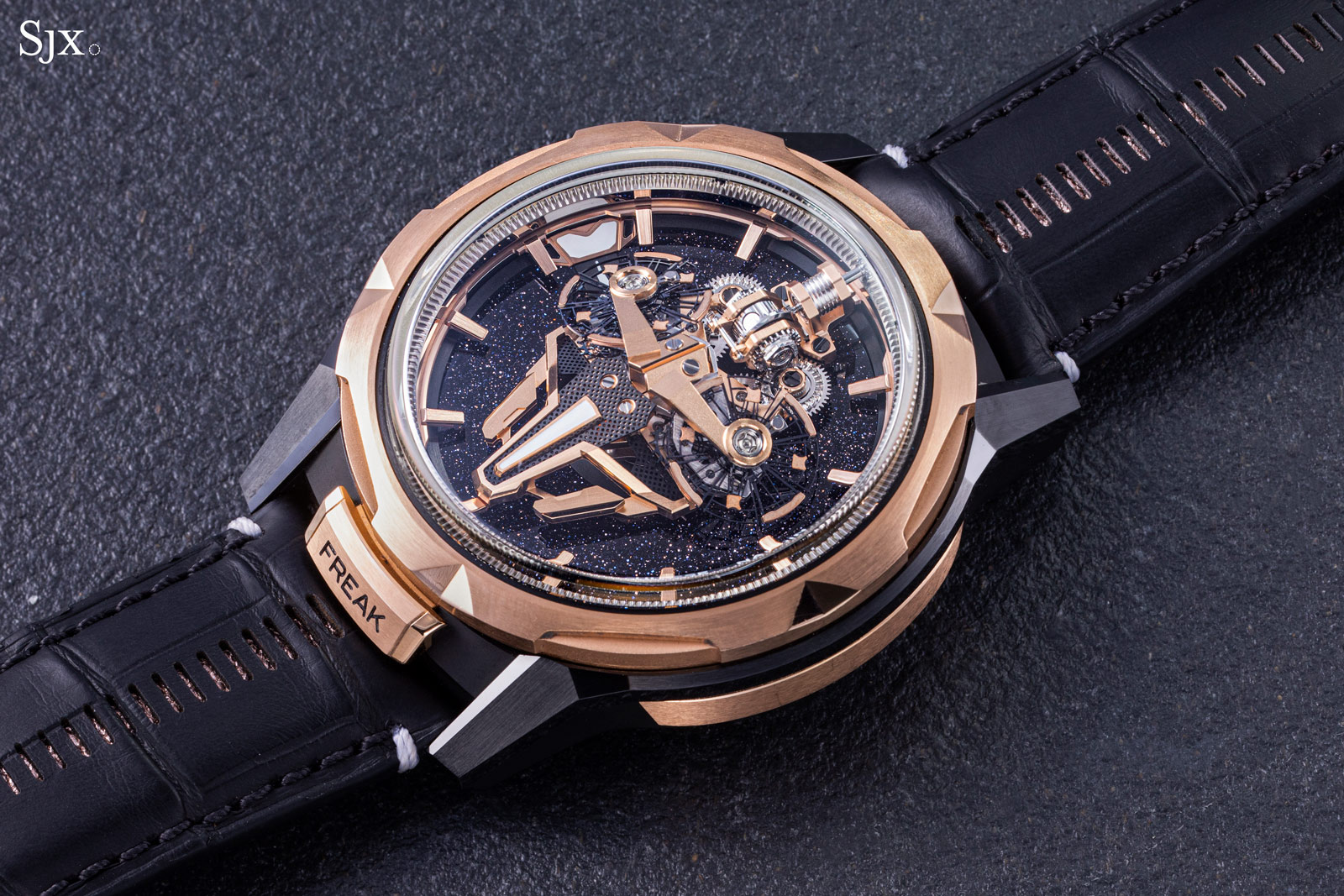
Fancy but practical
Despite being so far from orthodox movement construction, the Freak was a fairly practical watch, as is the Freak S. Reading, winding, and setting are straightforward (though setting can take a bit of time).
While the complex dial throws off the casual observer, it becomes easy to read once you get used to it. Both the minute and hour pointers are large and obvious. At the same time, telling the time in the dark is easy with the plentiful Super-Luminova on the pointers. Both have large “lume” plots integrated well into the design.
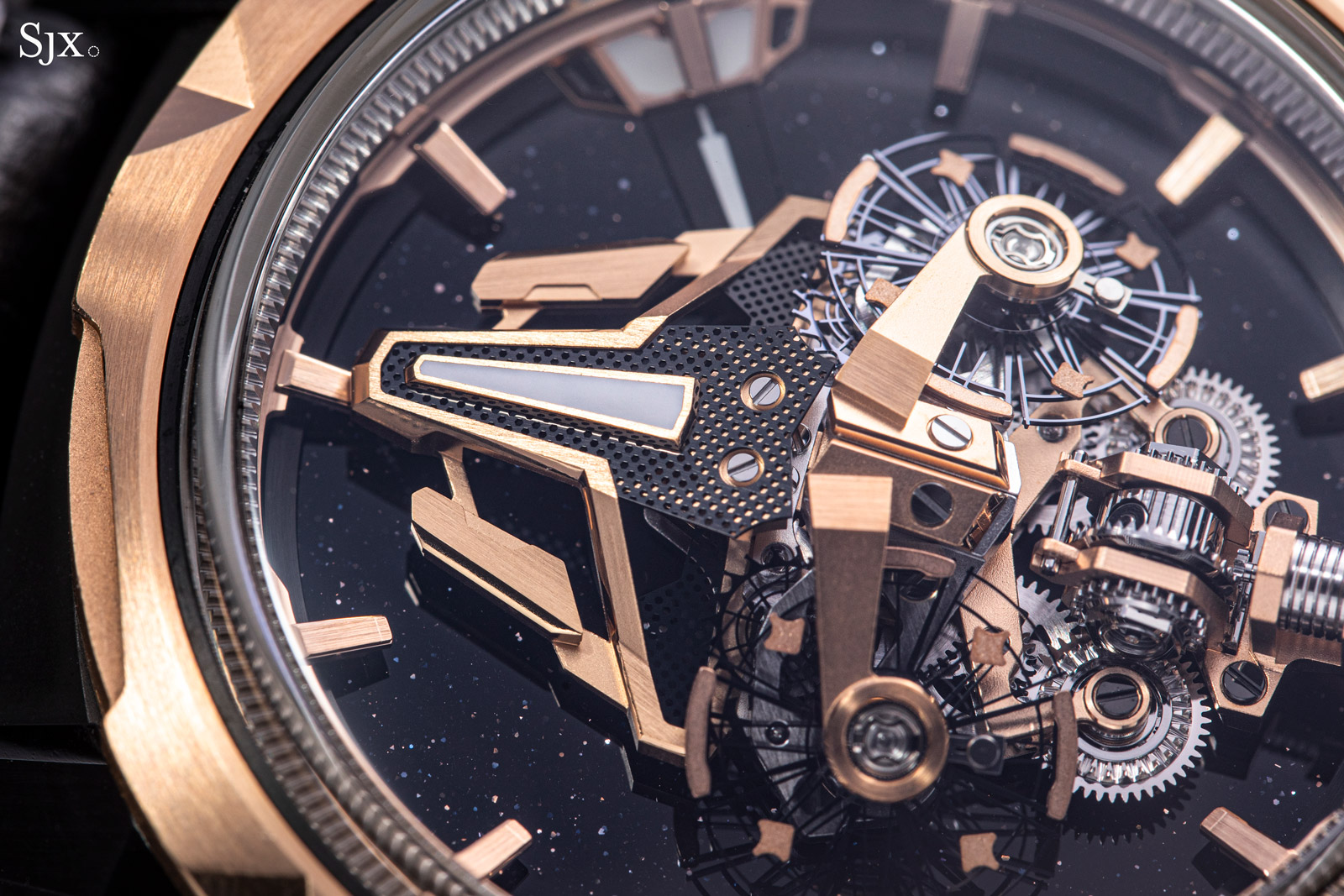
As with all full-fledged Freaks – the Freak X is the only one with a conventional crown – the Freak S is set via the bezel. Explaining the sharply notched bezel, this also guarantees a symmetrical case with clean lines and no crown.
The bezel-setting mechanism is a result of the movement construction: the ring gear around the dial is fixed to the inner circumference of the bezel so turning the bezel rotates the entire movement at the same time. As detailed above, the pinion and ring gear are responsible for driving the carousel, which means the setting mechanism is a clever, secondary function of the construction.
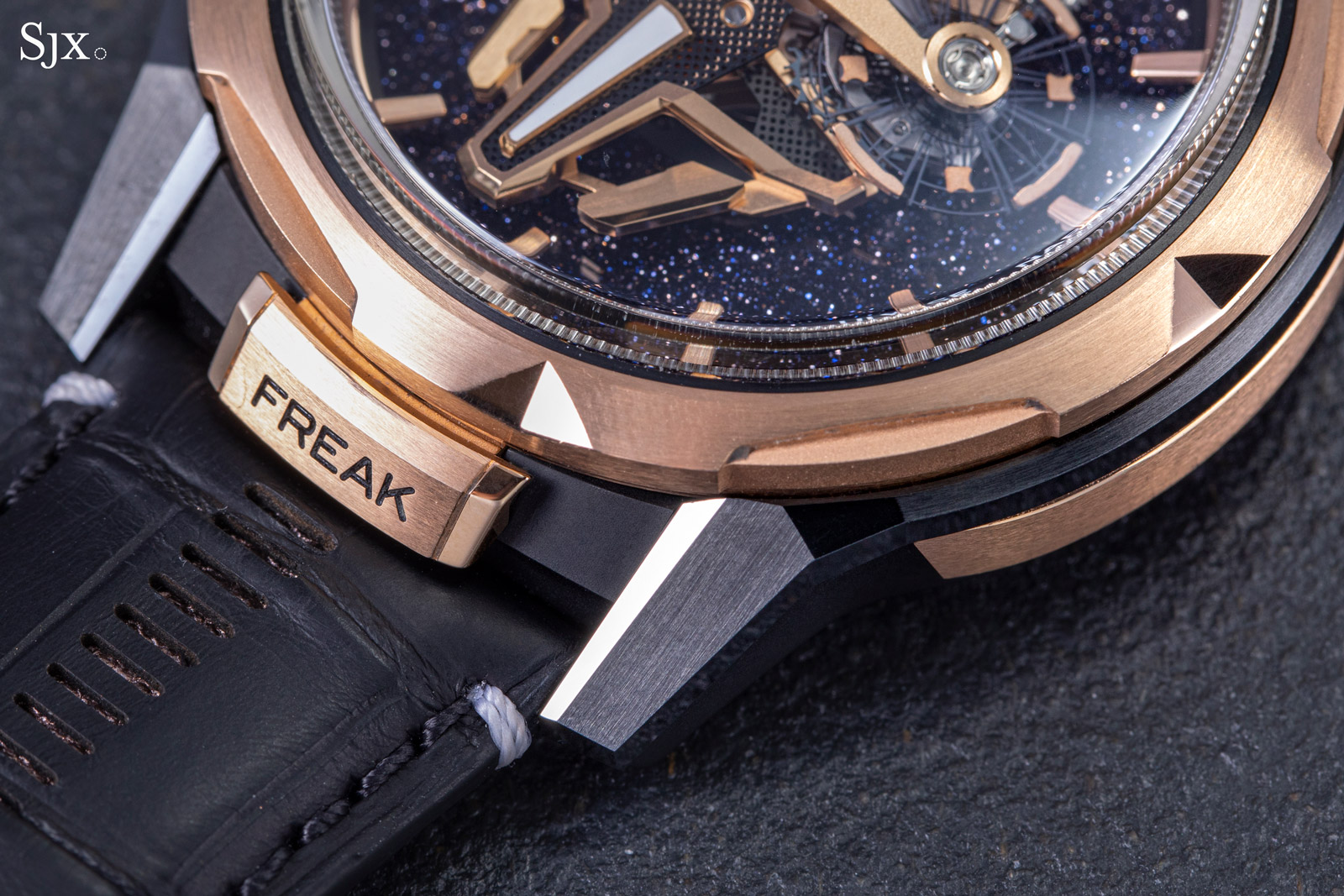
The locking tab is engraved with the model name but I would have preferred an unmarked tab that would better blend into the case
The only downside of the bezel-setting mechanism is that it takes a bit more effort to operate than the crown. Rotating the bezel to move the hands several hours forwards can take a few minutes.
To prevent accidental adjustment of the time, the bezel is locked by a small tab at six o’clock, a feature that’s been standard on the Freak since the second generation. But unlike on earlier models, the locking tab is designed to blend into the bezel so that it appears to be an extension of the bezel in both finish and style.
Finally there’s the automatic winding system, the “Grinder” mechanism developed in-house that was first seen on the Freak Innovision 2 concept watch of 2017. A complicated system equipped with a peripheral rotor and quadruple winding pawls, Grinder is about twice as efficient as most conventional self-winding mechanisms according to UN.
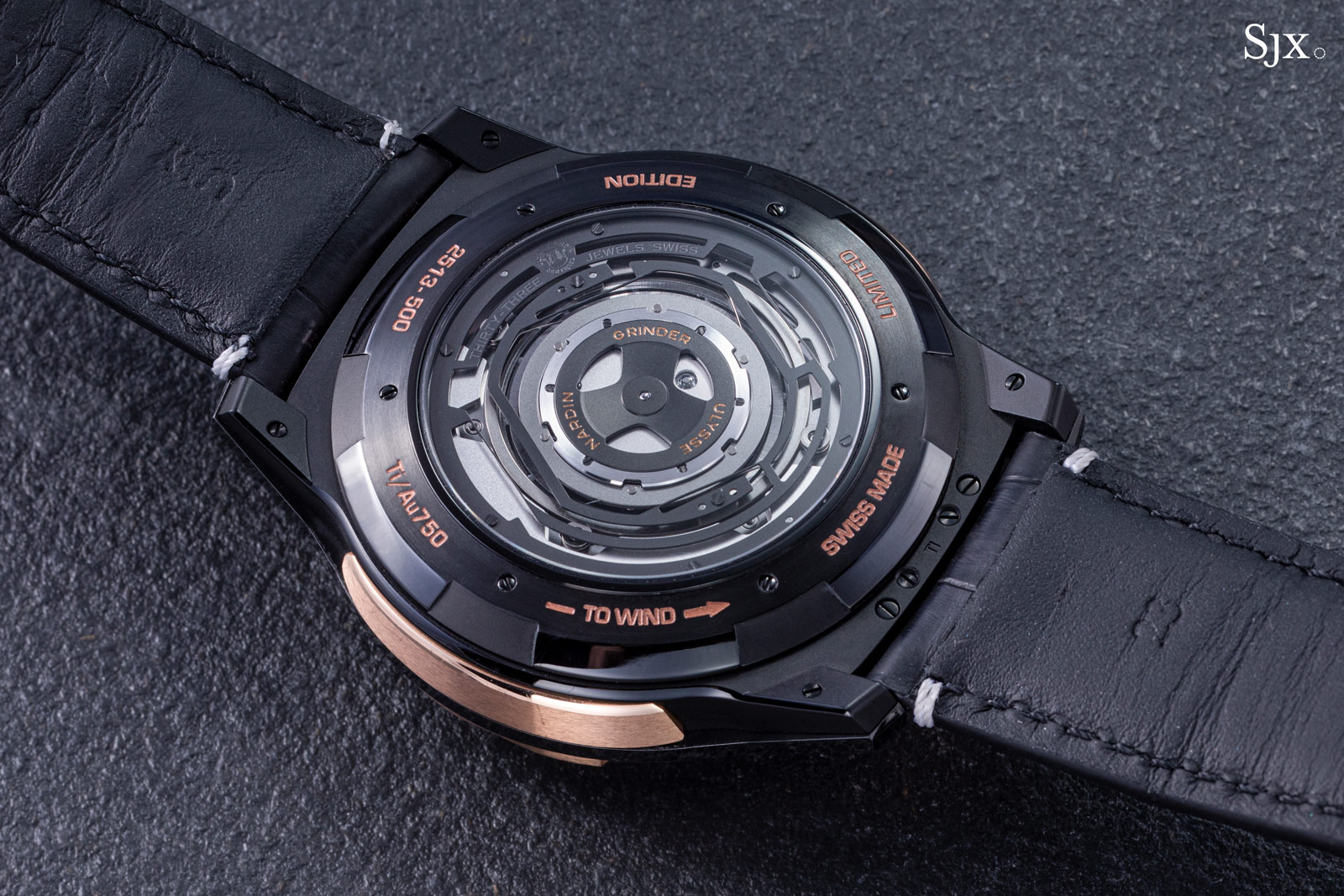
The mechanism relies on an open-worked frame with four pawls that can spin in both directions on the central axis. As it spins, the pawls catch the teeth of a large ring on the periphery of the movement, thus turning the wheels of the winding mechanism.
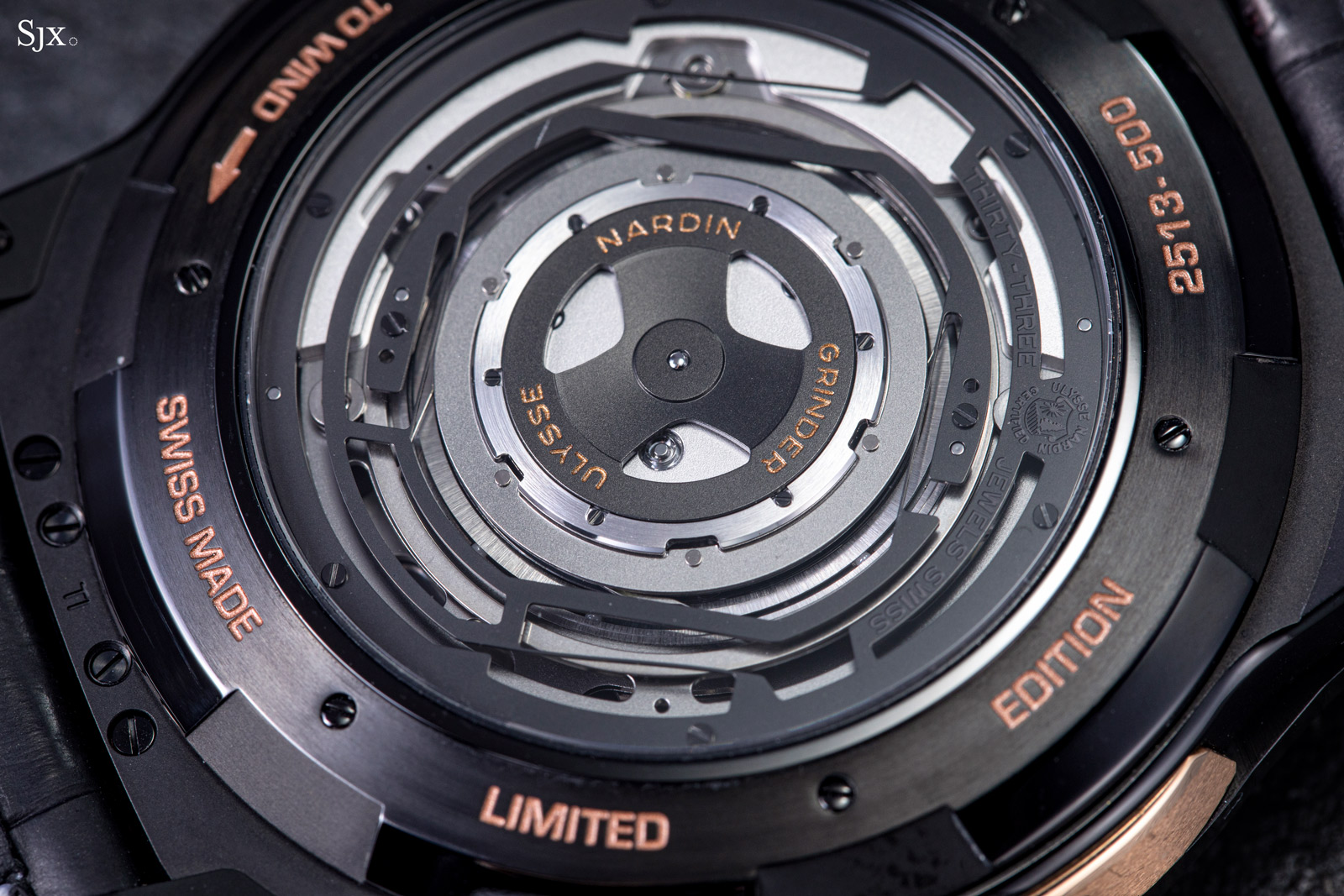
While the highly efficient winding system eliminates the need of hand-winding, the Freak S can still be manually wound by turning the back as with earlier Freak models, most of which were manually wound.
The automatic nature of the movement means that power reserve is no longer a critical matter, though it has to be pointed out that the Freak S has a three-day power reserve, compared to seven days (or a bit more) on the earlier models. This is due to the larger and heavier carousel that requires more energy to move, and a slightly flatter mainspring since both the Grinder mechanism and carousel occupy more vertical space.
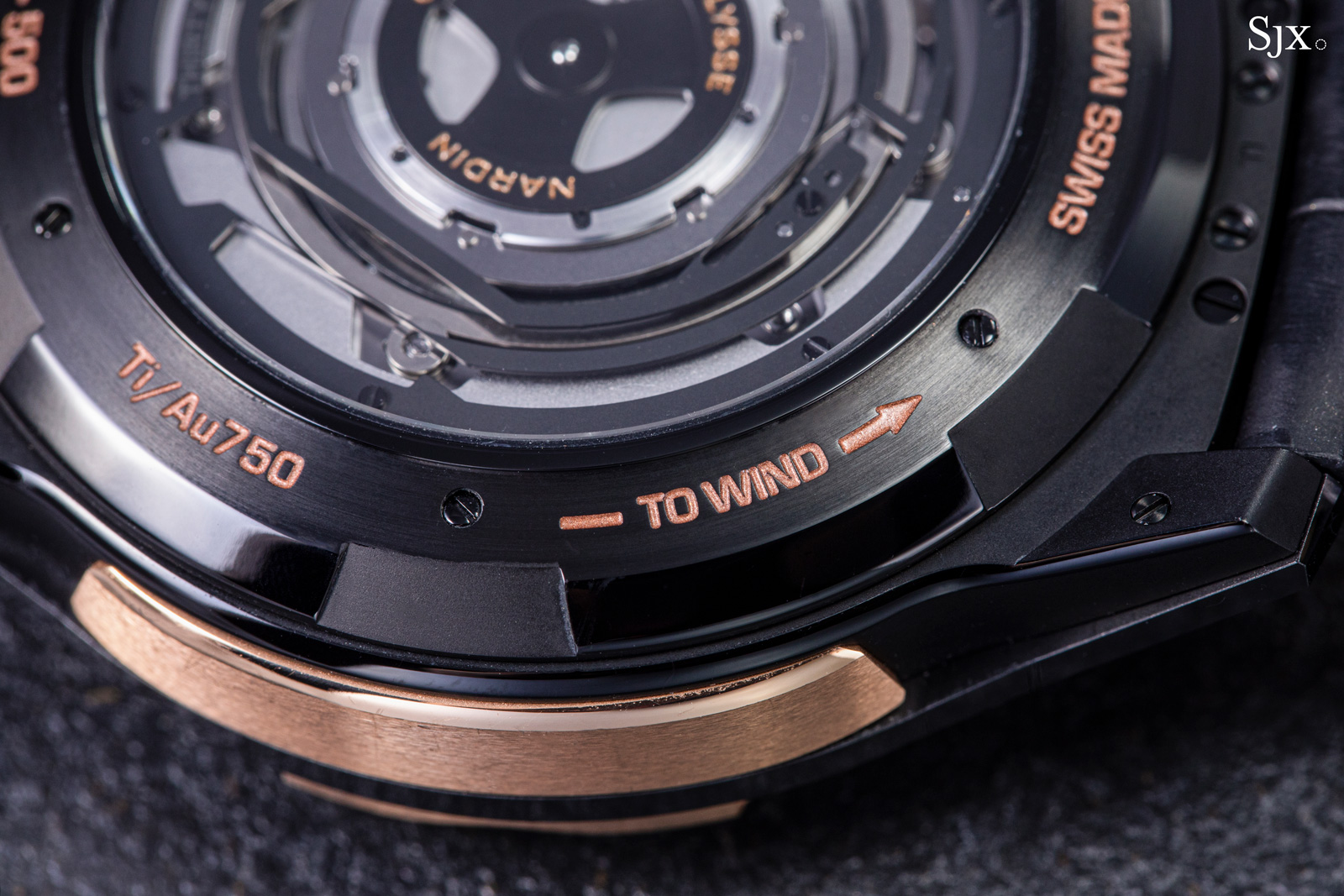
Hand winding by turning the case back
Decoration
Cutting edge watches are rarely about haute de gamme finishing, so the plain finishing on the first few Freak variants were considering acceptable. UN has since been applying more effort to dress up its movements, which is evident in the Freak S.
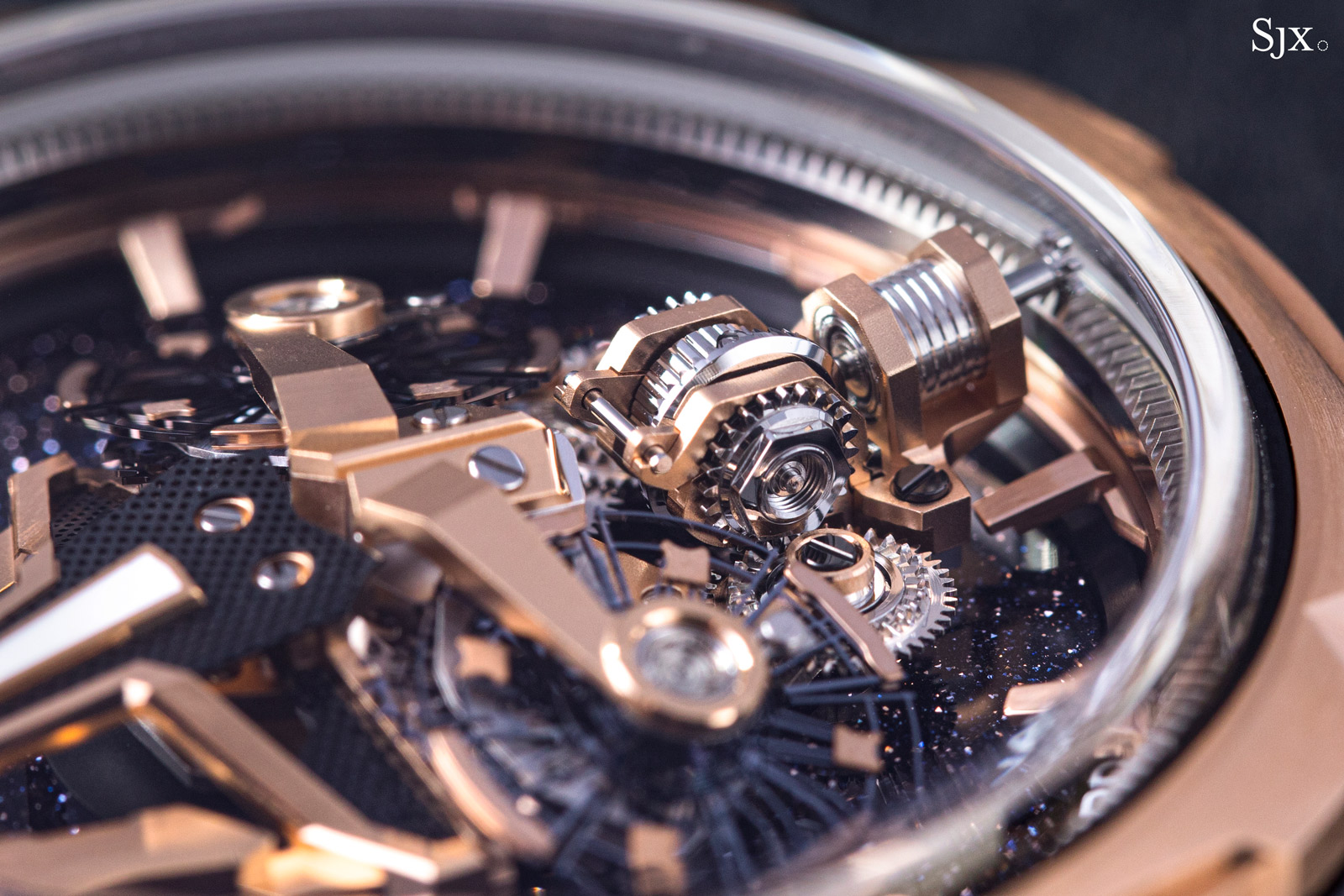
This is most obvious on the complex assembly visible on the dial. The decoration has enough fine detailing to pass muster on a watch of this price, while being clean enough to suit the ultra-contemporary style.

The finishing of a watch such as this should not be judged by traditional benchmarks, since its movement isn’t the right canvas to convey details like wide, rounded anglage simply because the bridges are too narrow. The architecture is too modern for such old-school details. Instead it is better suited to subtle techniques like frosting and brushing.
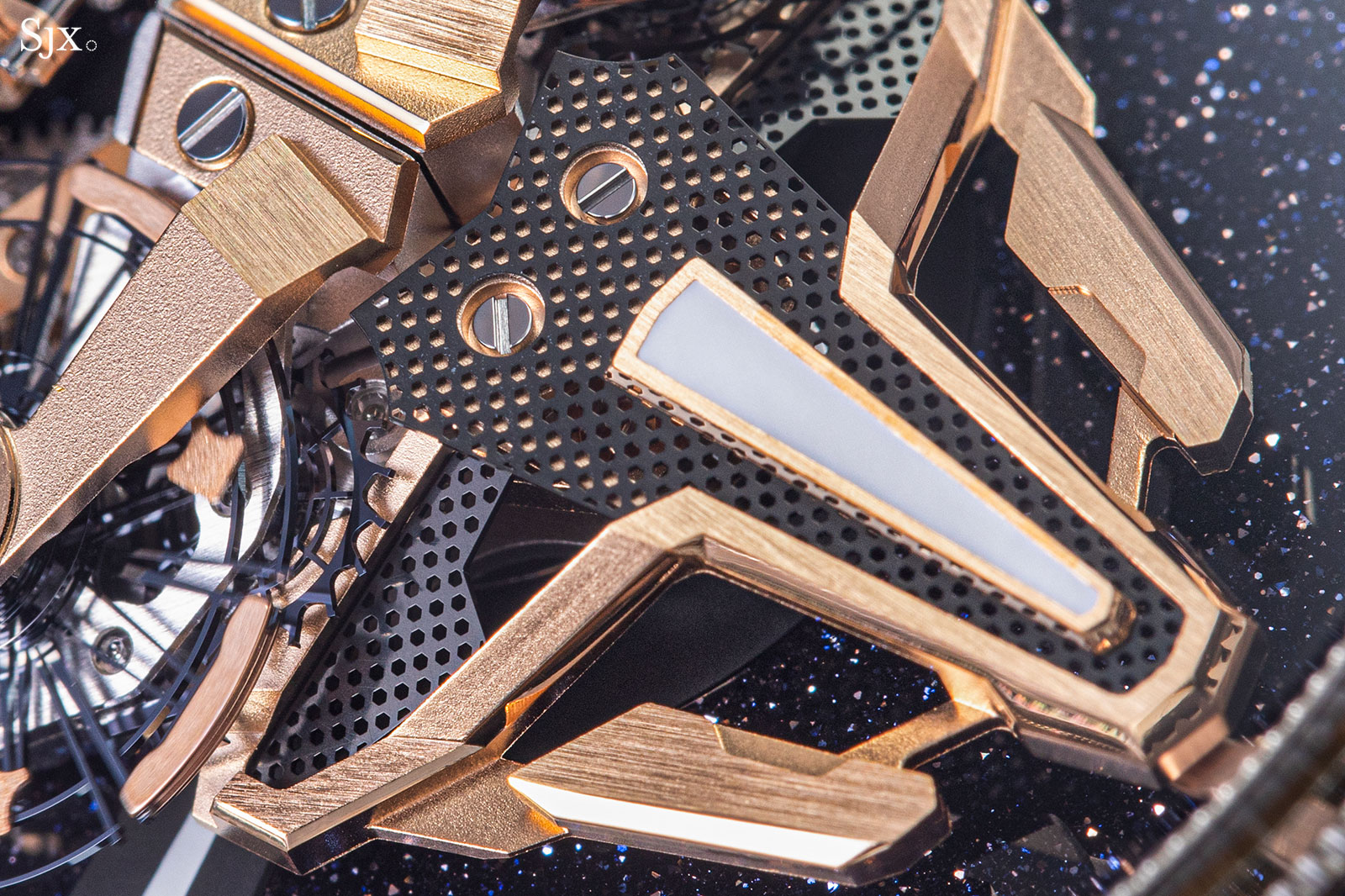
And UN has done those well. The bridges are neatly brushed with some edges polished and bevelled – with no visible traces of milling, indicating manual finishing – while screw heads are lightly chamfered. And the steel wheels of the differential are mostly polished, giving it a bright finish.
That said, the movement can be elevated by a handful more decorative flourishes in a modern style, as done by Greubel Forsey, though that would elevate the price to an unreasonable realm.
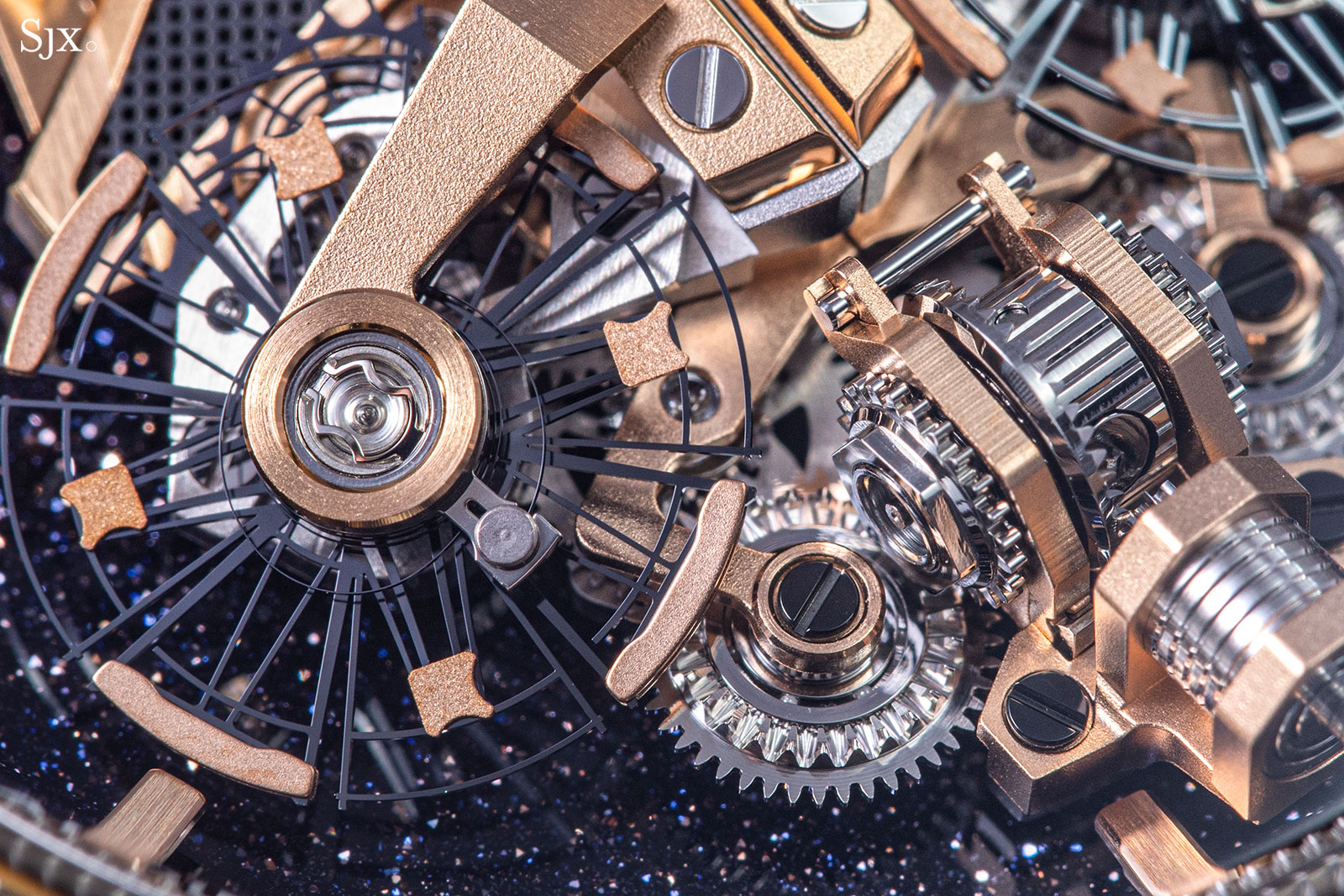
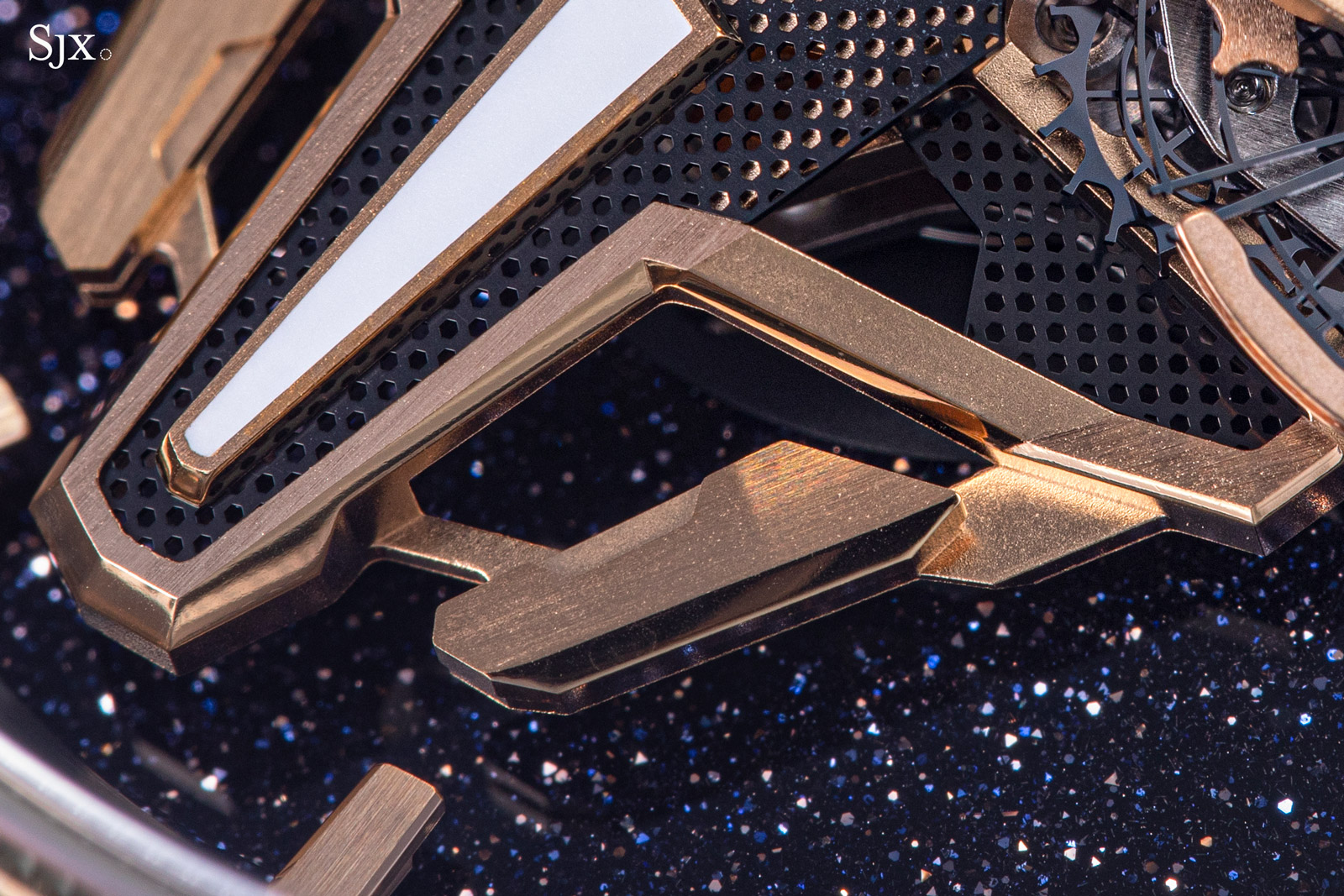
Concluding thoughts
A unique offering in watchmaking in its original form, the Freak concept has been taken further in a logical and coherent manner with the Freak S. It combines a historical idea, the twin balances of classical chronometers, with the avant-garde construction that is the Freak.
While it’s not the first innovative iteration of the model – ambitious predecessors including the Freak Vision of 2018 – the Freak S is easily the most unusual from a visual perspective.
Notably, the Freak S was launched not longer after UN became an independent brand, or at least one no longer part of a luxury conglomerate. So the Freak S parallels the 2001 original, which was launched by an indecent brand led by an iconoclastic leader, the late Rolf Schnyder. Given all that Schnyder accomplished after 2001, I look forward to what else UN has in store.
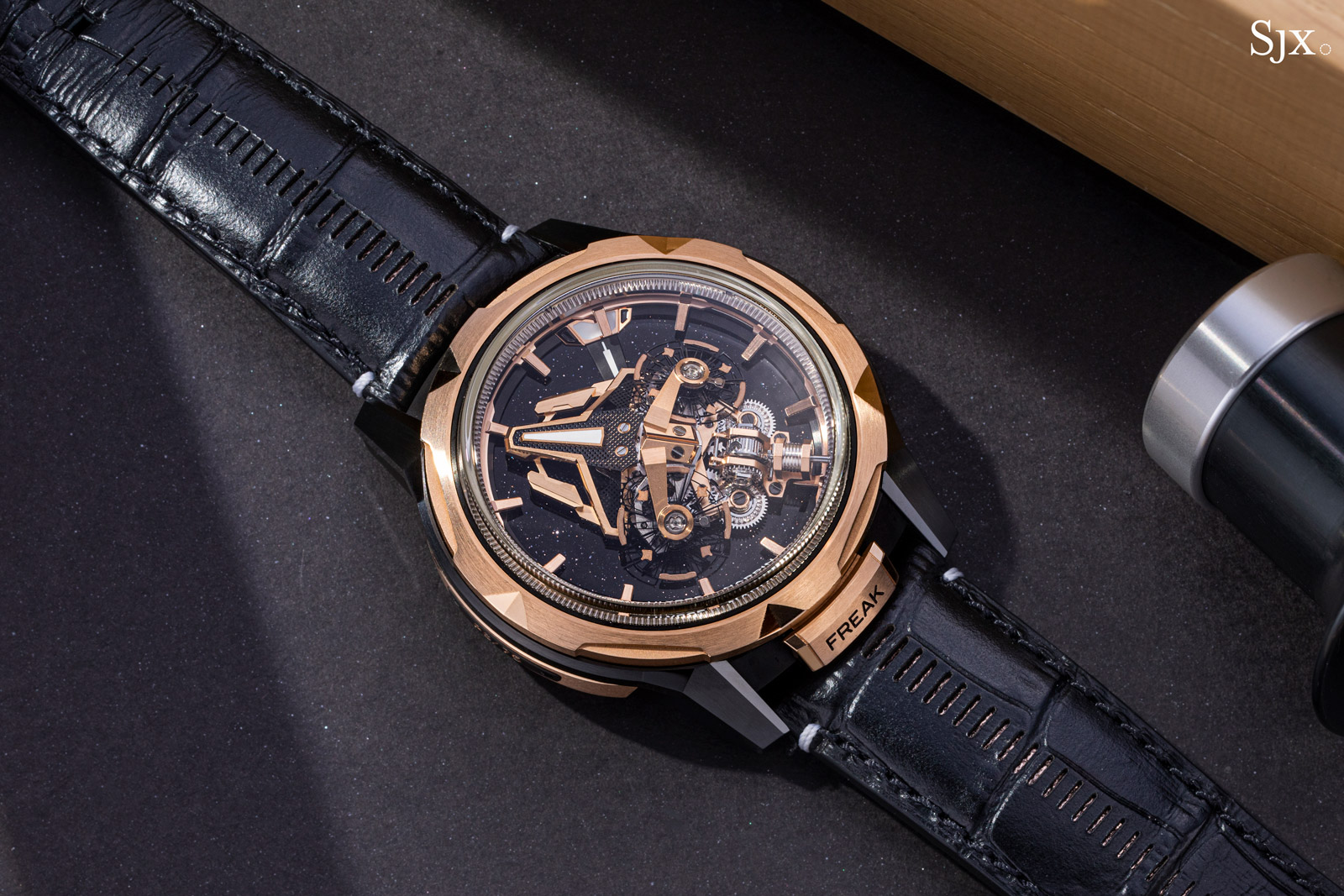
Key facts and price
Ulysse Nardin Freak S
Ref. 2513-500LE-2A-BLACK-5N/1A
Diameter: 45 mm
Height: Unavailable
Material: 18k rose gold, ceramic, and titanium
Crystal: Sapphire
Water resistance: 30 m
Movement: UN-251
Functions: Hours and minutes
Winding: Automatic
Frequency: 18,000 vibrations per hour (2.5 Hz)
Power reserve: 72 hours
Strap: Black alligator with golden calfskin inlay or black alligator
Limited edition: 75 pieces
Availability: At Ulysse Nardin boutiques and retailers
Price: US$137,000
For more, visit Ulysse-nardin.com.
Back to top.

